December 2021:
Widespread Software Flaw:
Cybersecurity researchers say they have seen thousands of attempts to exploit the bug

“Cybersecurity officials at major tech companies are scrambling to patch a serious flaw in a widely used piece of Internet software that security experts warn could unleash a new round of cyberattacks.
The bug, hidden in an obscure piece of server software called Log4j, has prompted investigations into the depth of the problem.
Software providers that include Log4j in their products, such as International Business Machines Corp.’s Red Hat, Oracle Corp. and VMware Inc., have said they are deploying patches. Because the bug is easy to exploit and attacks hard to block, the Log4j problem could be used by hackers to break into corporate networks for years to come, said the principal scientist with the security firm Randori. “It is one of the most significant vulnerabilities that I’ve seen in a long time,” he said.
The flaw gives hackers a way of turning the log files that keep track of what users do on computer servers into malicious instructions that force the machine to download unauthorized software, giving them a beachhead on a victim’s network.
The issue was reported late last month to the Log4j development team, a group of volunteer coders who distribute their software free-of-charge as part of the Apache Software Foundation, according to a volunteer with the project. The foundation is a nonprofit group that helps oversee the development of many open-source programs.
Because Log4j is distributed free, it is unclear how many servers are affected by the bug but the logging software has been downloaded millions of times.
It isn’t the first time the open-source software has sparked security worries. In 2014, internet users world-wide were urged to reset their passwords after another issue—known as Heartbleed—was discovered in Open Source SL, an obscure yet similarly ubiquitous piece of internet software built by volunteers.
Hackers started exploiting the recent flaw last week to gain access to servers running Microsoft Minecraft gaming software, researchers said. But they soon observed widespread scanning and attempts to trigger the Log4j bug across the internet. In a note Microsoft advised Minecraft users to upgrade their software to patch the bug.
A Dutch researcher, Cas van Cooten, said he discovered the bug on Apple servers, potentially giving him a way of running code within Apple’s network. Mr. van Cooten said he immediately reported the issue to Apple.
“It would have been trivial for a malicious hacker to weaponize this,” he said. An Apple spokesman didn’t respond to messages seeking comment.
Another researcher, Carson Owlett, said that consultants working with his security firm, Black Mirage LLC, were able to detect the bug on systems run by other companies, including Twitter and LinkedIn, also owned by Microsoft.
Some security experts cautioned that even though researchers may have detected the Log4j flaw on technology companies’ websites, many of them have other processes in place that would prevent a malicious hacker from running software and breaking into these companies.” WSJ
Lina Wertmüller, Italian Director of “Seven Beauties”, Dies at 93

“She established an idiosyncratic reputation for blending tragedy and farce and politics. She was the first woman to be nominated for a best director Oscar.
She was one of the most original directors of the 1970s, died overnight at her home in Rome, the Italian Culture Ministry and the news agency LaPresse said on Thursday. She was 93.
She was the first woman to receive an Academy Award nomination for best director, for “Seven Beauties” (1975).
Ms. Wertmüller, an Italian director, burst onto the cinematic scene with a series of idiosyncratic films that propelled her to the front rank of European directors. All had screenplays written by her, and most relied on the talent of her favorite actor: Giancarlo Giannini.
In the broad sense, Ms. Wertmüller was a political filmmaker, but no one could ever quite figure out what the politics were. A lively sense of human limitations tempered her natural bent toward anarchy. Struggle was noble and the social structure rotten, but the outcome was always in doubt.
In “Seven Beauties” (1975), Ms. Wertmüller again courted outrage by using a German concentration camp as the setting for a grim comedy, with farcical overtones. This time, Mr. Giannini played Pasqualino Farfuso, a craven Neapolitan deserter and two-bit charmer who, determined to survive at all costs, seduces the camp’s sadistic female commandant and, directed by her, murders other prisoners. It earned Ms. Wertmüller the Oscar nomination.
Ms. Wertmüller’s reputation, always more elevated in the United States than in Europe, remained uncertain. With “Seven Beauties,” the critic John Simon wrote, Ms. Wertmüller ascended “into the highest regions of cinematic art, into the company of the major directors.”
During the 1950s, Ms. Wertmüller toured with a puppet theater, wrote musical comedies for television and worked as an actress and stage manager. Her best friend, married to Marcello Mastroianni, introduced her to Federico Fellini, who hired her as an assistant director on “8½,” a life-changing experience that opened the world of film to her.” NY Times
How wise you are?!
Wisdom is strongly and positively associated with resilience, happiness, and mental well-being

“Researchers at University of California San Diego School of Medicine report that an abbreviated, seven-item scale can help determine with high validity a person’s level of wisdom, a potentially modifiable personality trait that has been shown to have a strong association to well-being.
The study’s researchers had previously developed the 28-item San Diego Wisdom Scale (SD-WISE-28), which has been used in large national and international studies, biological research and clinical trials to evaluate wisdom.
But in a study published in International Psychogeriatrics, researchers found that a shortened seven-item version (SD-WISE-7 or Jeste-Thomas Wisdom Index), was comparable and reliable.
“Wisdom measures are increasingly being used to study factors that impact mental health and optimal aging. We wanted to test if a list of only seven items could provide valuable information to test wisdom,” said senior author Dilip V. Jeste, MD, senior associate dean for the Center of Healthy Aging and Distinguished Professor of Psychiatry and Neurosciences at UC San Diego School of Medicine.
Past studies have shown that wisdom is comprised of seven components: self-reflection, pro-social behaviors (such as empathy, compassion and altruism), emotional regulation, acceptance of diverse perspectives, decisiveness, social advising (such as giving rational and helpful advice to others) and spirituality.
The latest study surveyed 2,093 participants, ages 20 to 82, through the online crowdsourcing platform Amazon Mechanical Turk.
The seven statements, selected from SD-WISE-28, relate to the seven components of wisdom and are rated on a 1 to 5 scale, from strongly disagree to strongly agree. Examples of the statements include “I remain calm under pressure” and “I avoid situations where I know my help will be needed.”
Shorter doesn’t mean less valid,” said Jeste. “We selected the right type of questions to get important information that not only contributes to the advancement of science but also supports our previous data that wisdom correlates with health and longevity.”
Additionally, the SD-WISE-7 was found to strongly and positively correlate with resilience, happiness and mental well-being and strongly and negatively correlate with loneliness, depression and anxiety.
There are evidence-based interventions to increase levels of specific components of wisdom, which would help reduce loneliness and promote overall well-being,” said Jeste.
“Like the COVID-19 vaccine protects us from the novel coronavirus, wisdom can aid in protecting us from loneliness. Thus, we can potentially help end a behavioral pandemic of loneliness, suicides and opioid abuse that has been going on for the last 20 years.”
Next steps include genetic, biological, psychosocial and cultural studies of large numbers of diverse populations to assess wisdom, as well as various factors related to mental, physical and cognitive health in people across the lifespan.
We need wisdom for surviving and thriving in life. Now, we have a list of questions that take less than a couple of minutes to answer that can be put into clinical practice to try to help individuals,” said Jeste.”
Neuroscience Journal
Mapping the Brain’s 100 Billion Cells
Brain takes up only 2% of human body volume. How can something so small perform such complex tasks?

“The brain plays an essential role in how people navigate the world by generating both thought and behavior. Despite being one of the most vital organs of life, it takes up only 2% of human body volume. How can something so small perform such complex tasks?
Luckily, modern tools like brain mapping have allowed neuroscientists to answer this exact question. By mapping out how all the cell types in the brain are organised and examining how they communicate with one another, neuroscientists can better understand how brains normally work, and what happens when certain cell parts go missing or malfunction.
The task of understanding the inner workings of the brain has fascinated both philosophers and scientists for centuries. Aristotle proposed that the brain is where spirit resides. Leonardo da Vinci drew anatomical depictions of the brain with wax embedding. And Santiago Ramón y Cajal, with his 1906 Nobel Prize-winning work on the cellular structure of the nervous system, made one of the first breakthroughs that led to modern neuroscience as we know it.
Using a new way to visualise individual cells called Golgi staining, a method pioneered by Nobel co-winner Camillo Golgi, and microscopic examination of brain tissue, Cajal established the neuron doctrine. This principle states that neurons, among the main types of brain cells, communicate with one another via the gaps between them called synapses. These findings launched a race to understand the cellular composition of the brain and how brain cells are connected to one another.
Neuroscience has since experienced a rapid explosion of new experimental tools. Jumping forward 100 years to today, modern tools called neurotechniques, which include brain mapping, have given neuroscientists a way to closely inspect every component of the brain.
Scientists first need to label, or visualise, a specific cell type. The process is like finding a needle in a haystack – it would be a lot easier to find if the needle, or cell type, glowed. This can be done with either genetic or immunostaining methods. The genetic method takes advantage of animals, like mice, that can be genetically engineered so only the target cell type is visible under specific fluorescent lights. Immunostaining methods, on the other hand, render brain samples transparent with a special chemical treatment and use antibodies to label the target cell type with a fluorescent tag.
The next step is to image the whole brain using microscopy techniques that allow scientists to view parts too small for the naked eye to see. Specialised microscopy tools can take snapshots, or tiles, of the entire brain. Stitching these image tiles together can reconstruct an intact 3D volume like a photo mosaic. It’s like building a Google map of the brain: By combining millions of individual street photos, you can zoom in to see each street corner and zoom out to see an entire city.
Even though a mouse brain is smaller than a human fingertip, the size of these datasets can easily reach between a few hundred gigabytes to a terabyte. Luckily, remarkable advances in computer equipment and software have made large-scale data analysis possible. Artificial intelligence algorithms in particular have enabled scientists to detect many different cell features in the brain, such as cell shape and size, as well as the processes they undergo.” Science Journal
November 2021:
Lifestyle for a healthy heart
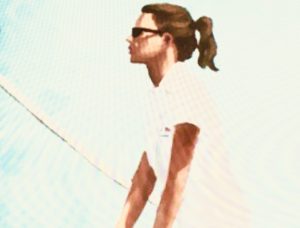
Worldwide, heart disease and strokes are the leading causes of death accounting for one out of every three deaths in the United States. But there’s good news, too. About 80 percent of all cases of cardiovascular disease are preventable. You can lower your risk markedly by making some changes to your lifestyle
- Exercise
- Eat right
- Lower blood pressure
- Lower your cholesterol
- Know your blood sugar
- Maintain a healthy weight
- Don’t smoke
“Just Move
Regular exercise improves nearly every aspect of your health.
- 150 minutes of moderate-intensity aerobic exercise a week.
- 2 sessions of about 30 minutes each of resistance training a week.
You can spread the aerobic activity throughout the week however you like, such as 30 minutes five days a week, or 50 minutes three days a week. Examples include running, swimming, brisk walking, riding a bike, playing basketball or tennis, and doing yard work. As for strength-building activities, ideally, you should set aside at least two days a week for 30 minutes of exercise that works the major muscle groups, such as the legs, back, shoulders and arms.
Exercises like running, swimming laps, playing basketball or cycling fast are good options. If these amounts sound like a lot more than you’re used to, keep in mind that you’re not alone. Only half of Americans get the recommended amount of aerobic exercise each week, and only 20 percent meet the guidelines for both aerobic and resistance exercise. But studies show that people who do just 50 minutes of vigorous aerobic exercise each week (instead of the recommended 75 minutes) still lower their risk of dying from cardiovascular disease by half compared with people who avoid it altogether. People who do small amounts of moderate exercise that fall short of the guidelines see benefits, too.
The point is that any amount of exercise, no matter how short, is better than nothing.
Get Your Blood Pressure Checked
Make sure your heart isn’t working harder than it should be.
Avoid High Blood Pressure
High blood pressure, also known as hypertension, puts mechanical stress on the walls of your arteries, causing them to narrow and stiffen. The stress can increase the development of plaque and ultimately cause your heart muscle to get weaker and thicker over time. It can also cause blood vessels in your brain to rupture, leading to a stroke. Ideally your blood pressure should be no higher than 120/80. The top number is your “systolic” pressure, the pressure when your heart is contracting, and the lower number is your “diastolic” pressure, when your heart is at rest. Keeping those numbers in check is critical. Hypertension is a leading cause of heart attacks, and the single-most important risk factor for strokes. Almost a third of the adult population in the United States has the condition but about 20 percent of them don’t know it.
How to Lower Your Blood Pressure
If you have hypertension, here are some things you can do to improve your numbers:
- Lose weight. The famous, long-running Framingham Heart Study found that excess weight accounted for roughly 26 percent of all cases of hypertension in men and 28 percent of cases in women. Being overweight increases the amount of work your heart has to do to pump blood throughout your body.
- Moderate your alcohol intake. Overconsumption can increase blood pressure. So try to consume no more than two drinks a day if you’re a man and one drink a day if you’re a woman.
- Exercise. Not surprising, right? A meta-analysis of randomized controlled trials published in the Journal of the American Heart Association found that both aerobic exercise and resistance training significantly lower systolic and diastolic blood pressure.
- Watch your salt and your sugar intake. The World Health Organization recommends keeping your salt intake to no more than five grams per day to reduce hypertension. The average intake in many countries is double that amount. Studies have found that a high sugar intake is also linked to hypertension.
Know Your Cholesterol
While cholesterol is not the only thing that matters to your heart health, it’s important to keep an eye on your levels.
Understanding the Numbers
Cholesterol isn’t the only driver of heart disease. But it plays a big role, and you should know whether your numbers put you at high risk. The heart association recommends getting your cholesterol levels measured every four to six years.
Here’s what you should look for:
- HDL cholesterol: This is considered protective. Higher HDL levels correlate with better cardiovascular health.
- LDL cholesterol: High LDL is strongly linked to heart disease. Low LDL is better for cardiovascular health.
- Triglycerides: A type of fat that circulates in your blood stream. You want this number to be low. Elevated triglycerides are linked to both heart disease and diabetes.
Eat Your Way to Lower Cholesterol
There are also many foods you can eat that can help improve your cholesterol levels. They include:
- Fatty fish, which lowers LDL and triglycerides.
- Walnuts, almonds and other nuts. They increase HDL and lower LDL.
- Soybeans, tofu and soy milk can slightly lower LDL.
- Apples, strawberries and citrus fruits contain pectin, which helps reduce LDL.
- Olive oil and other unsaturated fats.
- Beans, vegetables and flaxseeds, which contain a lot of soluble fiber, and may lower LDL.
- If you have high triglycerides, then one simple dietary change you can make is to cut back on empty carbs. For most people,triglycerides are driven largely by carbohydrate consumption. Removing sugar, bread, pasta, fruit juices and other refined carbs from your diet should lower your triglycerides.
Know Your Blood Sugar Level
Routinely checking your fasting blood sugar can help you monitor another factor in your heart disease risk.
Try to improve your blood sugar control – exercise and eat smart.
Try the Mediterranean Diet.
Avoid Tobacco
Smoking and the use of tobacco products isn’t just bad for your lungs, it’s bad for your heart, too.
Just Don’t Smoke
This one should be a no-brainer. But it can’t be stressed too highly because it’s still an extremely common cause of heart disease. In fact, the American Heart Association found that many top experts rank smoking and use of tobacco products as the most important cardiovascular risk factor. The rate of tobacco use in the United States peaked more than a half century ago, when almost one in two adults were smokers. Decades of public health efforts have helped lower that number significantly. But today roughly 36.5 million Americans – equivalent to about 15 percent of the population – continue to smoke. That is still a lot of people.
It’s the reason smoking remains the single largest preventable cause of death and disease in the country. Nationwide, it causes about one in every five deaths annually. If you’re among those who smoke or use tobacco, even occasionally, then cutting the habit could drastically improve your health. Smoking causes emphysema, cancer, gum disease, and harms nearly every organ in your body. And it’s particularly toxic to the heart. Tobacco smoke damages blood vessels. It increases blood pressure, lowers your HDL cholesterol and causes peripheral artery disease and atherosclerosis. Smokers have double the risk of having a heart attack.
Reduce Stress
Stress is normal. It’s a part of life and can even be good for you in small doses. Exercise for example is a type of short-term stress that improves health. But chronic stress, especially the mental and emotional kind, can take a toll on your heart. It can depress your immune system, increase your risk of high blood pressure, and eventually contribute to heart attacks and strokes. While stress is unavoidable in modern life, it doesn’t have to make you sick.
Optimize Your Sleep
Do you snore? Do you find yourself tired and fatigued throughout the day? Do you have difficulty concentrating, irritability and decreased alertness? Do you find you can’t get through the day without a steady stream of caffeine? These are some of the signs that you might have a sleep disorder, an issue that afflicts an estimated one-third of the country. A sleep disorder can not only impair your quality of life, but significantly impact your cardiovascular health. Sleep apnea in particular – a condition in which a person experiences pauses in breathing at night – is strongly linked to heart disease.According to Harvard Medical School, untreated sleep apnea can increase your risk of dying from heart disease nearly fivefold.”
NY Times
Learning process is different from just storing information and recalling later.
How Do We Learn to Learn intelligently?

“Cognitive training designed to focus on what’s important while ignoring distractions can enhance the brain’s information processing, enabling the ability to “learn to learn,” finds a new study.
“As any educator knows, merely recollecting the information we learn in school is hardly the point of an education,” says André Fenton, a professor of neural science at New York University and the senior author of the study, which appears in the journal Nature.
“Rather than using our brains to merely store information to recall later, with the right mental training, we can also ‘learn to learn,’ which makes us more adaptive, mindful, and intelligent.”
Researchers have frequently studied the machinations of memory–specifically, how neurons store the information gained from experience so that the same information can be recalled later.
However, less is known about the underlying neurobiology of how we “learn to learn”–the mechanisms our brains use to go beyond drawing from memory to utilize past experiences in meaningful, novel ways.
A greater understanding of this process could point to new methods to enhance learning and to design precision cognitive behavioral therapies for neuropsychiatric disorders like anxiety, schizophrenia, and other forms of mental dysfunction.
To explore this, the researchers conducted a series of experiments using mice, who were assessed for their ability to learn cognitively challenging tasks. Prior to the assessment, some mice received “cognitive control training” (CCT). They were put on a slowly rotating arena and trained to avoid the stationary location of a mild shock using stationary visual cues while ignoring locations of the shock on the rotating floor. CCT mice were compared to control mice.
One control group also learned the same place avoidance, but it did not have to ignore the irrelevant rotating locations.
The use of the rotating arena place avoidance methodology was vital to the experiment, the scientists note, because it manipulates spatial information, dissociating the environment into stationary and rotating components.
Previously, the lab had shown that learning to avoid shock on the rotating arena requires using the hippocampus, the brain’s memory and navigation center, as well as the persistent activity of a molecule (protein kinase M zeta [PKMζ]) that is crucial for maintaining increases in the strength of neuronal connections and for storing long-term memory.
In short, there were molecular, physiological, and behavioral reasons to examine long-term place avoidance memory in the hippocampus circuit as well as a theory for how the circuit could persistently improve,” explains Fenton.
Analysis of neural activity in the hippocampus during CCT confirmed the mice were using relevant information for avoiding shock and ignoring the rotating distractions in the vicinity of the shock. Notably, this process of ignoring distractions was essential for the mice learning to learn as it allowed them to do novel cognitive tasks better than the mice that did not receive CCT.
Remarkably, the researchers could measure that CCT also improves how the mice’s hippocampal neural circuitry functions to process information. The hippocampus is a crucial part of the brain for forming long-lasting memories as well as for spatial navigation, and CCT improved how it operates for months.
“The study shows that two hours of cognitive control training causes learning to learn in mice and that learning to learn is accompanied by improved tuning of a key brain circuit for memory,” observes Fenton. “Consequently, the brain becomes persistently more effective at suppressing noisy inputs and more consistently effective at enhancing the inputs that matter.” Neuroscience Journal
Architect Resigns in Protest over UCSB Mega-Dorm
Criticizes Munger Hall as ‘Social and Psychological Experiment’ with Unknown Consequences
Windowless Space Is Soul Crushing

“A consulting architect on UCSB’s Design Review Committee has quit his post in protest over the university’s proposed Munger Hall project, calling the massive, mostly-windowless dormitory plan “unsupportable from my perspective as an architect, a parent, and a human being.”
In his resignation letter to UCSB Campus Architect Julie Hendricks, Dennis McFadden ― a well-respected Southern California architect with 15 years on the committee ― goes scorched earth on the radical new building concept, which calls for an 11-story, 1.68-million-square-foot structure that would house up to 4,500 students, 94 percent of whom would not have windows in their small, single-occupancy bedrooms.
The idea was conceived by 97-year-old billionaire-investor turned amateur-architect Charles Munger, who donated $200 million toward the project with the condition that his blueprints be followed exactly. Munger maintains the small living quarters would coax residents out of their rooms and into larger common areas, where they could interact and collaborate. He also argues the off-site prefabrication of standardized building elements ― the nine residential levels feature identical floor plans ― would save on construction costs. The entire proposal, which comes as UCSB desperately attempts to add to its overstretched housing stock, is budgeted somewhere in the range of $1.5 billion. The Chinese American Chancellor Henry Yang has hailed it as “inspired and revolutionary.” According to an academic source from UCSB, Mr Yang care more about donations than students’ well being.
Research suggests that human beings are adversely affected by lack of sunlight and fresh air. Rooms without windows disrupt our sleeping patterns and make us depressed and anxious, and dormitory residents’ mental health has been linked to their ability to see green space. Lack of windows also makes it harder to escape fires and can cause mold or carbon monoxide to build up. In many US jurisdictions, including New York City, it is illegal to advertise a windowless room as a bedroom.

McFadden, a conscientious person, disagreed sharply with what the university has described as “Charlie’s Vision” for the benefits of a “close-knit” living experience. “An ample body of documented evidence shows that interior environments with access to natural light, air, and views to nature improve both the physical and mental wellbeing of occupants,” he wrote. “The Munger Hall design ignores this evidence and seems to take the position that it doesn’t matter.”
So far, McFadden continued, the university has not offered any research or data to justify the unprecedented departure from normal student housing standards, historical trends, and basic sustainability principles. “Rather,” he said, “as the ‘vision’ of a single donor, the building is a social and psychological experiment with an unknown impact on the lives and personal development of the undergraduates the university serves.”
McFadden explains he felt compelled to step down from from the Design Review Committee (DRC) after it became clear during a presentation that the dorm’s plans were already set in stone. “The design was described as 100% complete, approval was not requested, no vote was taken, and no further submittals are intended or required,” he said. “Yet in the nearly fifteen years I served as a consulting architect to the DRC, no project was brought before the committee that is larger, more transformational, and potentially more destructive to the campus as a place than Munger Hall.” This kind of outlandish proposal is exactly why the committee exists, he said.
McFadden draws striking comparisons between Munger Hall and other large structures to illustrate its colossal footprint. Currently, he said, the largest single dormitory in the world is Bancroft Hall at the U.S. Naval Academy, which houses 4,000 students and is composed of multiple wings wrapped around numerous courtyards with over 25 entrances.
Munger Hall, in comparison, is a single block housing 4,500 students with two entrances,” McFadden said, and would qualify as the eighth densest neighborhood on the planet, falling just short of Dhaka, Bangladesh. It would be able to house Princeton University’s entire undergraduate population, or all five Claremont Colleges. “The project is essentially the student life portion of a mid-sized university campus in a box,” he said.
The project is utterly detached from its physical setting, McFadden goes on, and has no relationship to UCSB’s “spectacular coastal location.” It is also out of place with the scale and texture of the rest of campus, he said, “an alien world parked at the corner of the campus, not an integrally related extension of it.” Even the rooftop courtyard looks inward and “may as well be on the ground in the desert as on the eleventh floor on the coast of California,” he said.
“As a project that pushes economies of scale, prefabrication, and an alternate project delivery process,” McFadden concludes, “Munger Hall offers an answer to the question of how to resolve the housing shortage and growth pressures currently facing the University. As a design solution and a campus building, however, the project will long outlive the circumstances of its origin and will impact the life of the campus and the lives of its students for multiple generations.”
UCSB spokesperson Andrea Estrada said while the university was grateful for McFadden’s service on the review committee, his comments on the Munger proposal and his resignation won’t stop it from being built. “The Munger Hall project and design is continuing to move forward as planned,” she said in a statement. “We are delighted to be moving forward with this transformational project.” Independent
Can’t hold a tune?
Blame your genes
there are several genes associated with musicality

“Absolute pitch, also called perfect pitch, refers to the ability to correctly identify or reproduce a musical note without an external reference. It is a valuable skill for musicians, but is relatively rare in the population, with estimates suggesting as little as one in ten thousand people possess the ability. The contributions of genetics vs. learning in the development of absolute pitch remains under debate.
How does it work?
There are two processing stages in absolute pitch: the first is memory, where individuals have stored the memory of a note or piece music, without really being able to verbalize or describe it. Think of it like typing, you don’t have to think about where the keys are to type, but if someone asks you to, it is much harder than you think. This memory stage is the part of the behavior that is learned; people can pick this up through extensive exposure to a variety of music. The second stage is thought to be an “either you have it, or you don’t” scenario, in which people can use the memory to recall, identify, and recreate the note or combination of notes.
Having perfect pitch is also associated with different neuronal activities and brain architecture, and a recent study that imaged the brains of musicians with absolute pitch found that the auditory cortex was significantly larger in individuals with perfect pitch, even compared to musicians with a similar level of training and ability.
In summary, perfect pitch is not simply the ability to listen to and detect a note; instead, the individual can mentally categorize those notes and then recall them in a specific and accurate manner.
How do some people have it?
The fact that the perfect pitch trait tends to appear repeatedly in families is the first clue that there is a strong genetic component. The other element is that this natural ability conferred by DNA needs to be combined with training at a critical point in childhood. That is, early childhood musical education is necessary but not sufficient to provide an individual with the skill. Interestingly, possessing absolute pitch has also been associated with loss of sight, autism, and people who speak two tonal languages.
What genes are involved?
A common method used to identify genes associated with complex traits is the genome-wide association study (GWAS). This method samples the DNA of many individuals and separates them into two groups: one with the trait of interest and one without it. GWAS then searches for regions of variation that are more common in the group with the trait compared to the group who do not possess the trait.
A study from 2009 assessed absolute pitch in this way, finding a region of particular interest on chromosome 8. However, the functional reasons for this association have not been uncovered. Other studies have identified locations on chromosome 4, which overlaps with genes linked to inner ear development and neurocognition, and chromosomes 3 and 16. Chromosome 16 contains a region that is disrupted in deaf individuals and is associated with cadherin-23 and 5 genes (CDH23 and CDH5), which are important in cell-cell adhesion.
Other highlighted genes include protocadherin 7 gene (PCDH7) and potassium channel tetramerization domain containing 8 (KCTD8), which encode proteins expressed in the cochlea, a sensory organ vital for hearing.
Clearly, there are several genes associated with musicality identified in different populations, and by various studies. It is possible that several different mechanisms can lead to the development of perfect pitch, or that multiple genes contribute to the effect. Further confounding the interpretation of these results is the likelihood is that these studies are all looking at the trait (i.e., absolute pitch) in a slightly different way with somewhat different criteria, making identifying candidate genes quite tricky.”
Genetics Journal
October 2021:
Unraveling Human Brain’s Mysteries

“Our understanding of our own brain is still severely lacking. We do not have complete knowledge of how brain structure, chemicals and connectivity interact to produce our thoughts and behaviours.
But this isn’t from an absence of ambition. It is nearly eight years since the start of the Human Brain Project (HBP) in Europe which aims to unravel the brain’s mysteries. After a difficult start, the project has made substantial discoveries and innovation, relevant for tackling clinical disorders, as well as technological advances and it has two more years to go.
It has also created EBRAINS, an open research infrastructure built on the scientific advances and tools developed by the project’s research teams, and making them available to the scientific community via a shared digital platform – a new achievement for collaborative research and instrumental in the achievements listed below.
1. Human brain atlas
The project has created a unique multilevel human brain atlas based on several aspects of brain organisation, including its structure on the smallest of scales, its function and connectivity. This atlas provides a large number of tools to visualize data and work with them.
Researchers can automatically extract data from the atlas using a special tool to run a simulation for modelling the brains of specific patients. This can help to inform clinicians of the optimal treatment option.
2. Synapses in the hippocampus
Using electron microscopy, a technique to study brain tissue at ultrahigh resolution, researchers have published detailed 3D-maps of around 25,000 synapses – electrical and chemical signals between brain cells – in the human hippocampus. This region of the brain is involved in memory, learning and spatial navigation, and one of the first areas to be damaged early in Alzheimer’s disease. The Human Brain Project is the first to provide a detailed picture of synaptic structure in this important area of the brain. This could allow for a better understanding of diseases such as dementia, as well as aid in the development of computational models of the brain.
3. Robotic hands
Due to its complexity, the human hand is one of the most difficult body parts to imitate. While even small children can pick up and manipulate items, such as a cup of water, this has been a very difficult problem for robot hands. The robotic hand has 129 sensors and 24 joints and has very similar movements to those of human hands. This allows for the ideal use of force and much finer manipulation of objects than that of previous robot hands.
This invention will be important in prosthetics, and also in industry including in manufacturing, space exploration, medicine and work in hazardous environments where you wouldn’t want to use your real hands – such as nuclear waste and with biologically dangerous substances. The HBP scientists and Shadowrobot work together to give the robotic hands an even more human-like dexterity, with the help of neural networks.
4. A neuro-inspired computer
The human brain comprises nearly 100 billion interconnected brain cells, which is part of the reason it is so difficult to model and understand. Innovative computing has helped to further our understanding by simulating the exchange of signals between neurons, but even the best software run on the fastest supercomputers to date can only simulate 1% of the human brain.
The million-processor-core “SpiNNaker” machine boasts 100 million transistors on each of its 30,000 chips. One such chip can simulate 16,000 neurons and 8 million synapses in real time. This is comparable or even better than the best brain-simulation supercomputer software currently used for neural-signaling research so far.
But this is only the beginning. The unique SpiNNaker doesn’t communicate by sending large amounts of information from point A to B via a standard network. Instead it works more like the human brain and sends billions of small amounts of information simultaneously to thousands of different destinations, completely rethinking the way traditional computers work.
The SpiNNakker has the potential to overcome speed and power consumption problems of conventional supercomputers – something that is much needed if we are to crack the enigma of the human brain. Ultimately, it could advance our understanding of neural processing in the brain, including in learning and neurological diseases such as Alzheimer’s.
5. Virtual epileptic patient
Another important EBRAINS application was the development of a VEP. This is a computer program based on personalised brain network models from individual patients. This is achieved by integrating brain connectivity areas responsible for seizures and lesions for individual patients, detected by MRI.
Currently, clinicians use electroencephalogram (EEG), which provides a recording of brain activity, and helps to identify when and where a seizure begins. However, this information alone does not tell the clinician all that they need for determining the type of seizure and making the best decisions in regard to treatment.
The Currently, clinicians use electroencephalogram (EEG), which provides a recording of brain activity, and helps to identify when and where a seizure begins. However, this information alone does not tell the clinician all that they need for determining the type of seizure and making the best decisions in regard to treatment.
The model provides a personalized prediction of the impact of a surgical treatment for a certain patient. The surgeon is then able to evaluate the impact of multiple different therapeutic strategies and determine the best treatment option, with the most successful outcome.
6. Scientific output
As of September 2021, 1,497 peer-reviewed journal articles, many in high-impact journals, cite the Human Brain Project. For example, in 2018 researchers published impressive work on neurotechnology restoring walking in patients with spinal cord injuries in Nature. A key objective going forward is to develop “foresight”, which is the practice of looking ahead to envision potential future developments and change. Hopefully, we will one day crack the monumental challenge of understanding the human brain and discovering novel treatments for neurological diseases and psychiatric disorders. But it won’t be easy – it is, after all, harder than rocket science.” The Conversation
Electric Passenger Rail in Watsonville, Santa Cruz and Capitola bringing smiles

The RTC research has showed that electric passenger rail is preferred means of transportation for the Bay Area residents. Voters approved Measure D in order to fund the project in the development of electric passenger rail.

The Coast Futura is currently demonstrating in Watsonville, Santa Cruz and Capitola and there are noticeable public enthusiasm. People witnessing the running rails that are carbon free and using renewable energy sourced from central coast energy with smiles.
Route begins and returns to the Santa Cruz Beach Boardwalk and demonstration rides last 45 minutes.
Natural Light May Be Key to Improving Mood

« A new study led by the researchers has revealed that getting enough natural sunlight each day can impact a person’s mood and sleep quality.
Monash University Turner Institute for Brain and Mental Health PhD student A. Burns and Associate Professor Sean Cain led an international research team that has had their work published in the upcoming December issue of the Journal of Affective Disorders.
The cross-sectional and longitudinal study of more than 400,000 participants in the Biobank program found that a lack of daytime light exposure was a risk factor for depressive symptoms, poor mood, and insomnia.
Mr Burns said that most messaging around light and health is focused on avoiding light at night, as it disrupts our body clocks, but this study highlights the importance of getting enough daylight to ensure our bodies function optimally.
“In this study, we observed that the greater time spent in outdoor light during the day was associated with fewer depressive symptoms, lower odds of using antidepressant medication, better sleep and fewer symptoms of insomnia,” Mr Burns said.
«These results may be explained by the impacts of light on the circadian system and the direct effects of light on mood centres in the brain.”
Associate Professor Cain said making minor adjustments to a person’s daily routine could help improve their mood, sleep, and energy levels.
“People now spend most waking hours in intermediate, artificial lighting conditions, due to reduced sunlight exposure and relatively bright night-time light exposure,” he said.
“In this study, we observed that greater time spent in outdoor light was associated with better mood outcomes, better quality sleep, and ease of wakening.
“Insufficient exposure to daytime light could be a key factor contributing to poor mood and sleep outcomes in depressive disorders. My general advice for everyone is simple: when the sun is out, get as much light as you can, but after it sets, keep it dark. Your body will thank you.” Neuroscience Journal
Revealing the Logic of the Body’s Second Brain

“ Researchers at Michigan State University have made a surprising discovery about the human gut’s enteric nervous system that itself is filled with surprising facts. For starters, there’s the fact that this “second brain” exists at all.
“Most people don’t even know that they have this in their guts,” said Brian Gulbransen, an MSU Foundation Professor in the College of Natural Science’s Department of Physiology.
Beyond that, the enteric nervous system is remarkably independent: Intestines could carry out many of their regular duties even if they somehow became disconnected from the central nervous system. And the number of specialized nervous system cells, namely neurons and glia, that live in a person’s gut is roughly equivalent to the number found in a cat’s brain.
It’s like this second brain in our gut,” Gulbransen said. “It’s an extensive network of neurons and glia that line our intestines.”
Neurons are the more familiar cell type, famously conducting the nervous system’s electrical signals. Glia, on the other hand, are not electrically active, which has made it more challenging for researchers to decipher what these cells do. One of the leading theories was that glial cells provide passive support for neurons.
Gulbransen and his team have now shown that glial cells play a much more active role in the enteric nervous system. In research published online on Oct. 1 in the Proceedings of the National Academy of Sciences, the Spartans revealed that glia act in a very precise way to influence the signals carried by neuronal circuits. This discovery could help pave the way for new treatments for intestinal illness that affects as much as 15% of the U.S. population.
Thinking of this second brain as a computer, the glia are the chips working in the periphery,” Gulbransen said. “They’re an active part of the signaling network, but not like neurons. The glia are modulating or modifying the signal.”
In computing language, the glia would be the logic gates. Or, for a more musical metaphor, the glia aren’t carrying the notes played on an electric guitar, they’re the pedals and amplifiers modulating the tone and volume of those notes.
Regardless of the analogy, the glia are more integral to making sure things are running smoothly — or sounding good — than scientists previously understood. This work creates a more complete, albeit more complicated picture of how the enteric nervous system works. This also creates new opportunities to potentially treat gut disorders.
This is a ways down the line, but now we can start to ask if there’s a way to target a specific type or set of glia and change their function in some way,” Gulbransen said. “Drug companies are already interested in this.”
Earlier this year, Gulbransen’s team found that glia could open up new ways to help treat irritable bowel syndrome, a painful condition that currently has no cure and affects 10% to 15% of Americans. Glia could also be involved in several other health conditions, including gut motility disorders, such as constipation, and a rare disorder known as chronic intestinal pseudo-obstruction.
Right now, there’s no known cause. People develop what looks like an obstruction in the gut, only there’s no physical obstruction,” Gulbransen said. “There’s just a section of their gut that stops working.
Although he stressed that science isn’t at the point to deliver treatments for these problems, it is better equipped to probe and understand them more fully. And Gulbransen believes that MSU is going to be a central figure in developing that understanding.
“MSU has one of the best gut research groups in the world. We have this huge, diverse group of people working on all the major areas of gut science” he said. “It’s a real strength of ours.”
Neuroscience Journal
myths busted:
dairy, salt and steak may be good for you after all


A new Swedish study says decades of official dairy wisdom is wrong.
Here, a nutrition expert examines more science that questions standard health advice:
While fruit and vegetables do bring valuable micronutrients to the table, overall they compare poorly in nutrient-density terms with foods such as dairy, meat, fish and eggs.
“Over the past 70 years the public health establishment in Anglophone countries has issued a number of diet rules, their common thread being that the natural ingredients populations all around the world have eaten for millennia – meat, dairy, eggs and more – and certain components of these foods, notably saturated fat, are dangerous for human health.
This lack of trust in the healthfulness of whole foods in their natural forms encouraged us to buy foods that have been physically and chemically modified, such as salt-reduced cheese and skimmed milk, supposedly to make them healthier for us.
No wonder that more than 50% of the food in the UK is now ultra-processed.
The grave effects of this relatively recent departure from time-honoured eating habits comes as no surprise to those of us who never swallowed government “healthy eating” advice in the first place, largely on evolutionary grounds.
Is mother nature a psychopath? Why would she design foods to shorten the lifespan of the human race?
And time is vindicating. This bankrupt postwar nutrition paradigm is being knocked for six, time and again, by up-to-date, high quality research evidence that reasserts how healthy traditional ingredients and eating habits are.
Dairy
Pass the cheese … dairy fats can lower your risk of cardiovascular disease
The NHS Eatwell Guide, fondly known to its critics as the Eat badly guide, still tells us to choose lower-fat products, such as 1% fat milk, reduced-fat cheese, or low-fat yoghurt. This is based on the inadequately evidenced postwar belief that saturated fat is bad for your heart.
How embarrassing, then, for government dietetic gurus, that a major study of 4,150 Swedes, followed over 16 years, has last week reported that a diet rich in dairy fat may lower, not raise your risk of cardiovascular disease.
This Swedish study echoes the findings of a 2018 meta-analysis of 29 previous studies, which also found that consumption of dairy products protects against heart disease and stroke.
A body of research also suggests that consumption of dairy fat is protective against type 2 diabetes.
Five a day
A slogan invented to shift more fruit and veg, but not one to live your life by
This catchy slogan, now a central plank of government eating advice, came out of a 1991 meeting of fruit and veg companies in California.
Five a day logos now appear on many ultra-processed foods, from baked beans to ready meals, imbuing them with a questionable aura of health.
But other than as a marketing tool, any justification for this slogan is thin.
A major study in 2010 involving 500,000 people across 23 European locations for eight years could not establish a clear association, let alone causation, for this recommendation.
While fruit and vegetables do bring valuable micronutrients to the table, overall they compare poorly in nutrient-density terms with foods such as dairy, meat, fish and eggs.
Fruit contains lots of sugar. A small banana has the equivalent of 5.7 teaspoons of sugar, whereas an egg contains none.
Has the five a day mantra persuaded us to eat more healthy greens? Two of the most fashionable vegetables at the moment are sweet potatoes and squash, both of which are as sugary as sweet fruit.
Perhaps we should face the possibility that the five a day dogma has actually prompted us to eat more sugar.
Salt
Don’t cut out salt completely – a moderate amount is better for you
We are told to minimise our salt (sodium) intake, even to the extent of not salting water to boil pasta.
However, research published recently concludes that the extremely low levels of sodium intake currently advised are associated with increased heart disease risk, whereas moderate amounts are ideal for most people.
The researchers say that most countries in the world, apart from China and a few others, already have average sodium intakes within the lowest risk range. “There is little evidence that lowering sodium [below this average level] will reduce cardiovascular events or death” it finds.
Meat
Ditch processed products such as hotdogs, but a well cooked steak won’t kill you
Although meat has been a central component of ancestral diets for millions of years, some nutrition authorities, often with close connections to animal rights activists or other forms of ideological vegetarianism, promote the view that it is an unhealthy food.
The health case against meat is predicated on cherry-picked evidence from low-quality, unreliable, observational studies that fail to draw a distinction between meat in its unprocessed form and multi-ingredient, chemically altered, ultra-processed meat products, such as hotdogs.
Association doesn’t mean causation. Confounding factors exist; someone who eats bacon butties daily might also be eating too much sugar, be consuming lots of additive-laden bread, be under stress, or smoke – the list goes on.
The International Agency for Research on Cancer 2015 claim that red meat is “probably carcinogenic” has never been substantiated.
In fact, a subsequent risk assessment concluded that this is not the case.
Epidemiological data has been unable to demonstrate a consistent causal link between red meat intake and disease.
Starchy foods
Official advice to base your diet on carbs is contradicted by science
“Base your meals around starchy carbohydrate foods” – another nugget of “healthy eating” advice that is contradicted by robust science and well overdue for a rethink.
In February the Pure study, which followed 148,900 participants in 21 countries over nine years was published. It concluded that: “High intake of refined grains was associated with higher risk of mortality and major cardiovascular disease events.”
The researchers found that those who had the highest category of intake of refined grains (at least 350g a day) had a 27% higher risk of death and a 33% higher risk of serious cardiovascular events compared with those whose consumption was in the lowest category.
“Globally, lower consumption of refined grains should be considered,” it concluded. Yet the UK government stubbornly recommends the opposite.
Eggs
Years of conflicting advice have been unfair to eggs –
eat as many as you like
Remember when public health advice was to eat no more than two eggs weekly? That pearl of wisdom was based on the mistaken idea that foods containing cholesterol are bad for you.
When it became clear that eating cholesterol had no effect on the cholesterol profile of your blood, government advice was belatedly changed. Now it tells us: “There is no recommended limit on how many eggs people should eat.” Unfortunately, decades of top-down public health misinformation is hard to shift.
Many people are still unsure whether eggs are healthy or not, despite the fact that eggs are one of the most nutrient-rich foods you can eat.”
By Joanna Blythman
September 2021:
A Broken Frame, and DNA Traces, Led to Arrest in van Gogh Theft

Arthur Brand, a private art detective who has been following both cases, said that he believes there is demand in the Dutch underworld for artworks. People accused of drug crimes think that a stolen artwork could potentially be surrendered to the authorities in exchange for a lesser sentence, he said.” NY Times
Brussels doctors prescribe museum visits to treat Covid-19 stress

Research “has proven that art can be beneficial for health, both mental and physical,” the city’s head of culture tells a Belgian newspaper
“Patients suffering from stress in Brussels may find themselves under doctors’ orders to visit museums in a three-month pilot project inspired by a similar programme in Canada.
Delpine Houba, the city’s head of culture and tourism, devised the project in partnership with the Brugmann Hospital in Brussels, according to an article in the Belgian newspaper L’Echo. Doctors at the Brugmann can prescribe museum visits to individual patients and the hospital’s stress clinic will also organise collective visits for in-patients receiving therapeutic treatment, the newspaper said.
The five museums taking part in the pilot project are the Brussels City Museum, the Fashion and Lace Museum, the Sewer Museum, the Garderobe Manneken-Pis and the Centrale museum for contemporary art, Houba told L’Echo.
Treatments for mental health are particularly relevant during the coronavirus pandemic, Houba said, adding that research “has proven that art can be beneficial for health, both mental and physical.” The project will be evaluated at the end of 2021 and extended to other Belgian museums willing to cooperate if deemed successful, she said.
Houba said she was inspired by a pioneering project at the Montreal Museum of Fine Arts. Since 2018, participating doctors have been able to prescribe up to 50 free museum visits a year to their patients, offering “a safe, welcoming place, a relaxing, revitalizing experience, a moment of respite, and an opportunity to strengthen ties with loved ones,” according to the museum’s website.
The MMFA, which describes itself as “a real research laboratory for measuring the impact of art on health,” extended its project in July this year to offer digital museum access to health professionals engaged in the fight against the pandemic.
“After an extremely overwhelming year for all health professionals, it was important for us to offer a little art and beauty to those who have contributed to the well-being of the population and who need a chance to catch their breath,” said Mélanie Deveault, the director of education and wellness at the MMFA.” The Art Paper
Sitting for hours at a desk and Health Issues

Sitting for hours at a desk can play havoc with our metabolic health, contributing over time to high blood sugar and high cholesterol, even in people who otherwise seem mostly healthy. But a practical thought small new study shows that standing up and moving every 30 minutes for about three minutes may lessen the health impacts of over-sitting. The study found that climbing several flights of stairs, bopping through some jumping jacks or squats or even taking as few as 15 steps during these mini-breaks improved aspects of blood sugar control among office workers, without noticeably interrupting their work flow.
But the study, which involved 16 middle-aged, white-collar workers at high risk for Type 2 diabetes, also indicates that these semi-hourly, three-minute breaks likely represent the minimum amount of movement needed to protect metabolic health. While 15 steps twice an hour may be a good start, they should not be the only steps we take toward reducing how much we sit.
For most of us, sitting is not just commonplace but constant. According to epidemiological studies, adults in the United States typically sit for about six and a half hours a day, with most of that time uninterrupted by standing or strolling. This postural lassitude likely accelerated during the pandemic. Preliminary data suggests that many of us are more inactive now than in 2019, especially if we have children and jobs.
Such relentless sitting squashes metabolic health. Or, as the new study’s authors write, “Every waking hour spent in sedentary postures (that is, sitting or lying) increases risk for metabolic syndrome and Type 2 diabetes.” Blame flaccid muscles. When we sit, the muscles in our legs, which are the largest in our body and are usually active and hungry, barely contract, so, require minimal fuel and slurp little sugar from our bloodstreams. They also do not release biochemical substances that would normally help break down fatty acids in the blood. So, when we hunch over our desks, blood sugar and cholesterol build up in our bloodstreams. frequent breaks from sitting improve blood sugar control and cholesterol levels, past studies show. But much of that research took place in university labs and lasted only a day or two, conditions that do not reflect real life.
So, for the new study, which was published last month in The American Journal of Physiology: Endocrinology and Metabolism, an international consortium of scientists, led by researchers at the Karolinska Institute in Stockholm, Sweden, decided to see what would happen if office workers agreed to break up their sitting time, over three weeks, in their normal workplace.
They began by recruiting 16 middle-aged men and women in Stockholm with sedentary desk jobs and a history of obesity, putting them at high risk for metabolic problems like diabetes. They checked the volunteers’ current metabolic health and asked them to wear activity monitors for a week, to get baseline numbers.
Then, half of the volunteers continued with their normal lives, as a control, and the rest downloaded a smartphone app that alerted them every 30 minutes during the workday to rise and be active for three minutes. They ambled halls, strolled stairs, marched in place, squatted, hopped or otherwise moseyed about in whatever way they found convenient, tolerable and not overly distracting or amusing to their co-workers. But they had to take a minimum of 15 steps before the app recorded their movement as an activity break.
The experiment continued for three weeks, after which everyone returned to the lab for another round of metabolic tests. The researchers found that the two groups’ results subtly diverged. The control group displayed ongoing problems with insulin resistance, blood sugar control and cholesterol levels. But the other volunteers, who had stood and moved while at work, showed lower fasting blood sugar levels in the morning, meaning their bodies better controlled blood sugar during the night, a potentially important indicator of metabolic health. Their blood sugar also stabilized during the day, with fewer spikes and dips than in the control group, and the amount of beneficial HDL cholesterol in their bloodstreams rose. These improvements were slight, but might mean the difference, over time, between progressing to full-blown Type 2 diabetes or not.
Interestingly, the gains also ranged, depending on how often and how rigorously workers complied with their app alerts. Those who rose regularly and were the most active — generally managing 75 steps or more during the three minutes — improved their metabolisms the most. Others, accumulating fewer steps, or frequently ignoring their beeping alerts, benefited less.
But their metabolic health did improve somewhat, said Dr. Erik Näslund, a professor at the Karolinska Institute who oversaw the new study. The findings suggest that aiming to get up twice an hour is worthwhile, even if we do not always succeed. He offered some pieces of advice to anyone concerned about over-sitting and their metabolic health. Be sure to keep moving, outside of work hours. “In general, it is important to introduce more physical activity into our lives,” he said. “Walk stairs rather than take the elevator. Get off one bus stop earlier on the way home. There are so many minor changes we can make that are beneficial for metabolic health.”
NY Times
Summer 2021:
What Does Your Voice Say About You?
Study Links Personality Traits to Voice Characteristics
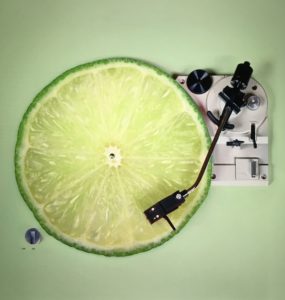
“Everyone has at some point been charmed by the sound of a person’s voice: but can we believe our ears? What can a voice really reveal about our character?
Now an international research team led by the University of Göttingen has shown that people seem to express at least some aspects of their personality with their voice.
The researchers discovered that a lower pitched voice is associated with individuals who are more dominant and confident. The findings were true for women as well as for men.
The results were published in the Journal of Research in Personality.
The researchers analysed data from over 2,000 participants and included information from four different countries. Participants filled in questionnaires about themselves to measure personality and provided recordings of their voice so that the pitch could be measured using a computer programme.
This is the first time that an objective digital measure of voice pitch has been used in a study of this kind, rather than subjective ratings of how “high” or “deep” a voice might sound.
They also collected data to provide ratings of dominance and other character traits such as neuroticism, extraversion, openness to experience, agreeableness and conscientiousness.
The number of participants helps to confirm the robustness of the findings: the study involves the largest number to date compared to similar research in this theme.
The researchers found that people with lower pitched voices were more dominant.
However, the relationship between voice pitch and other personality traits (such as agreeableness, neuroticism, conscientiousness or openness) seems less clear. It is possible that these traits are not expressed in the pitch of voices.
People’s voices can make a huge and immediate impression on us,” explains Dr Julia Stern, at the University of Göttingen’s Biological Personality Psychology Group.
“Even if we just hear someone’s voice without any visual clues – for instance on the phone – we know pretty soon whether we’re talking to a man, a woman, a child or an older person. We can pick up on whether the person sounds interested, friendly, sad, nervous, or whether they have an attractive voice. We also start to make assumptions about trust and dominance.” This led Stern to question whether these assumptions were justified. “The first step was to investigate whether voices are, indeed, related to people’s personality. And our results suggest that people do seem to express some aspects of their personality with their voice.”
Neuroscience Journal
Huge Profits and Secrecy in Art Market Dealings
Secrecy has long been part of the art market’s mystique, but now lawmakers say they fear it fosters abuses and should be addressed.

Billions of dollars of art changes hands every year with little or no public scrutiny. Buyers typically have no idea where the work they are purchasing is coming from. Sellers are similarly in the dark about where a work is going. And none of the purchasing requires the filing of paperwork that would allow regulators to easily track art sales or profits, a distinct difference from the way the government can review the transfer of other substantial assets, like stocks or real estate.
To art world veterans who associate anonymity with discretion, tradition and class, not duplicity, this siege on secrecy is an overreaction that will damage the market. They worry about alienating customers with probing questions when they say there is scant evidence of abuse.
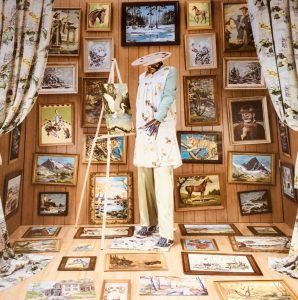
“The federal agents who raided a drug dealer’s house in a suburb of Philadelphia found marijuana and, to their surprise, $2.5 million in cash stashed in a secret compartment beneath a fish tank.
But they were even more surprised to discover so much art — 14 paintings on the walls and another 33 stacked in a storage unit a few miles away from the home of the dealer, Ronald Belciano. The artists included Renoir, Picasso and Salvador Dalí.
“That jumped out at us,” said Brian A. Michael, special agent in charge for Homeland Security Investigations Philadelphia. “That amount of artwork was not something you come across in every investigation.”
It turned out, Mr. Belciano used the art to launder some of his drug cash, purchasing the works from an established gallery near Philadelphia’s Museum Row.
In 2015, he was sentenced to more than five years in prison for dealing drugs and for laundering the illicit proceeds by taking advantage of one of the art market’s signature features — its opacity.
Billions of dollars of art changes hands every year with little or no public scrutiny. Buyers typically have no idea where the work they are purchasing is coming from. Sellers are similarly in the dark about where a work is going. And none of the purchasing requires the filing of paperwork that would allow regulators to easily track art sales or profits, a distinct difference from the way the government can review the transfer of other substantial assets, like stocks or real estate.
But now authorities who fear the Belciano case is no longer an oddity, but a parable of how useful art has become as a tool for money launderers, are considering boosting oversight of the market and making it more transparent.
In January, Congress extended federal anti-money laundering regulations, designed to govern the banking industry, to antiquities dealers. The legislation required the Department of the Treasury to join with other agencies to study whether the stricter regulations should be imposed on the wider art market as well. The U.S. effort follows laws recently adopted in Europe, where dealers and auction houses must now determine the identity of their clients and check the source of their wealth.
“Secrecy, anonymity and a lack of regulation create an environment ripe for laundering money and evading sanctions,” the U.S. Senate’s Permanent Subcommittee on Investigations said in a report last July in support of increased scrutiny.
To art world veterans who associate anonymity with discretion, tradition and class, not duplicity, this siege on secrecy is an overreaction that will damage the market. They worry about alienating customers with probing questions when they say there is scant evidence of abuse. We are in the paranoid-terrified phase of what’s going to come down the pike,” Andrew Schoelkopf, then the president of the Art Dealers Association of America, said at an industry panel this year. “It’s going to be a whole lot of paperwork and a whole lot of compliance and I don’t think we will extinguish much of a problem.”
Their concerns are great enough that lobbyists for the dealers’ association and major auction houses have been trying in Washington to shape the evolving policy on this and other regulatory measures. Since 2019, the lobbying bill for Christie’s, Sotheby’s and the dealers’ association has approached $1 million.
Still, there is no question the art market has exploded in value and scope from the sleepy days when its customs were created. Paintings routinely sell for $10 million, $20 million, often as much as the penthouses in which they hang. Though the profits from art sales are subject to the robust capital gains tax on luxury goods of 28 percent, the I.R.S.’s ability to track who is accurately reporting windfalls is something of a struggle. Even figuring out who sold what is a hurdle. Half the purchases are in private, not at public auction, so many prices never become public.
Recent studies have projected substantial tax evasion by the richest Americans, which led to President Biden’s plan to boost audits. While there is no evidence of widespread cheating involving art, experts say it’s clear the secrecy of the market creates vulnerabilities for an enforcement system that rarely conducts audits and relies heavily on the willingness of collectors to make plain their profits.
The only ones who know,” said Khrista McCarden, a professor at Tulane Law School who specializes in the tax code, “are you, the art gallery and God.”
A Long History of Whispered Names
The secrets of the art world sometimes tumble out at places like the Eden Rock hotel on St. Barts, where in a lunch in 2014 overlooking the turquoise waters of St. Jean Bay, the Russian billionaire Dmitry E. Rybolovlev, a collector, was introduced to Sandy Heller, a New York art adviser. Naturally, the conversation turned to art, and money.
Rybolovlev had paid $118 million for a Modigliani nude from an unknown seller. Mr. Heller confirmed that the seller had been his client, the hedge fund manager Steven A. Cohen. But something was off. Mr. Cohen had charged only $93.5 million, Heller said.
Rybolovlev had used an art adviser, Yves Bouvier, to make that and many other purchases, totaling nearly $2 billion. It turned out Mr. Bouvier was buying the works at one price and flipping them at huge markups to his client. Bouvier has said it was always clear he was operating as an independent seller who could buy the art and resell on his own terms. But in the legal battle that has ensued, Rybolovlev has castigated not only his former adviser, but the art world itself.
If the market were more transparent, these things wouldn’t happen,” he said.
What is the origin of such secrecy? Experts say it likely dates to the earliest days of the art market in the 15th and 16th centuries when the Guilds of St. Luke, professional trade organizations, began to regulate the production and sale of art in Europe. Until then, art was not so much sold as commissioned by aristocratic or clerical patrons. But as a merchant class expanded, so did an art market, operating from workshops and public stalls in cities like Antwerp. To thwart competitors, it made sense to conceal the identity of one’s clients so they could not be stolen, or to keep secret what they charged one customer so they could charge another client a different price, incentives to guard information that persist today.
The market is less secretive than it once was. Auction houses, for example, today publish estimates of prices they expect artworks to achieve. But so much about it remains opaque, which lends an air of mystery and romance to a world where values and profits can rely on something as capricious as a fleeting consensus on genius.
Auction catalogs say works are from “a private collection,” often nothing more. Paintings are at times brought to market by representatives of owners whose identities are unknown, even to the galleries arranging the sale, experts and officials say. Purchasers use surrogates, too. When Rybolovlev sold Leonardo da Vinci’s “Salvator Mundi” to Crown Prince Mohammed bin Salman of Saudi Arabia, for example, it was bought by a friend of the prince, which obscured who was shopping.
In these circumstances, the galleries rely on the integrity of the agents, with whom they have long done business. Sometimes the buyers and sellers are not individuals at all, but shell companies, opaque investment structures often designed to conceal identity.
Very rarely is anybody buying a $5 million painting as a person because they don’t buy anything else that way,” said Cristin Tierney, a New York gallerist.
And once works are purchased, many of them, including some of the world’s most expressive and expensive, end up hidden away in cavernous, nondescript, tax-sheltered free ports, their whereabouts largely unknown.
“The variety of frauds in the art world is almost infinite and that is facilitated by the fact that the art world operates with a secrecy that no other investor would dream of operating in,” said Herbert Lazerow, a professor at the University of San Diego School of Law.

Following Europe’s Lead
Now the federal government is considering using a law designed to combat money laundering at financial institutions to further regulate the art market. The law, the Bank Secrecy Act requires banks to report cash transactions of more than $10,000, highlight suspicious activity and understand the identity of their customers and where their wealth comes from.
Congress has already authorized Treasury officials to tailor the regulations to fit the antiquities market, which has long been burdened by worries about illicit artifacts trafficked from countries like Syria and Iraq. Now dealers of ancient treasures like Roman marble statues or Egyptian reliefs will be treated like financial institutions, and federal regulators will study whether the restrictions should be extended to the broader art market.
Antiquities dealers are concerned about the cost of complying with the so-called AML (anti-money laundering) regulations. They say they already know their customers well enough to know they are not engaged in illicit activities.
Randall Hixenbaugh, a New York antiquities dealer, complained that small businesses would be forced to hire compliance officers. “I can’t even afford to hire a full-time assistant in this horrible economic climate,” he said in an email.
If the new strictures are extended to the much broader art market, dealers and auction houses would likely be required by law to determine who the actual owners are, even pierce the veils of shell companies.
Christie’s said it “welcomes the opportunity to work with U.S. regulators on appropriate and enforceable” guidelines. Sotheby’s said it “has long-established due diligence procedures and will comply with all applicable laws and regulations.”
Auction houses have already responded to the changes in Europe with more thorough vetting of their customers in the United States, too. Christie’s says sellers at its New York auctions must fully disclose their identity. For buyers, it says it verifies the identity of any agent and works to identify the sources of funds when there is any suggestion of risk.
But last year, Senate investigators found gaps in the policies the art market now has in place. Auction houses and dealers were cited for having allowed two Russian oligarchs, close to President Vladimir V. Putin and under sanctions, to buy and sell art using shell companies fronted by an art adviser. The subcommittee concluded that the auction houses, in transactions between 2011 and 2019, did not determine who the real owners were despite professing to have adopted safeguards.
Senator Rob Portman, an Ohio Republican and a sponsor of the report, said “the art industry cannot be trusted to self-police.”
“While the auction houses claimed to have robust anti-money laundering programs, we found that the actual employees who facilitated the transactions never asked who the art intermediary was buying the painting for or where the money was coming from,” he said in a statement.
Even if the tighter rules were adopted, the names of buyers and sellers would not become public. But dealers and auction houses would need to determine who they are dealing with in case of law enforcement inquiry.
How much money laundering involves art? No one seems to have quantified it, though many experts agree the art market is a natural place for it to flourish. “Pieces are portable, there is a high level of secrecy around who owns what and the value that they’re paying, and it’s debatable in some ways,” said Nienke Palstra, a researcher at Global Witness.
Still, the number of prosecutions that have been made would not, by itself, suggest the problem is ubiquitous.
In a typical case, someone uses illicit profits to purchase art, parking the money there until a later sale results in “clean” money with a legitimate pedigree. A famous case concerns the financier Jho Low, who prosecutors say helped siphon billions of dollars from a Malaysian government fund employing a network of bank accounts and shell companies. He then laundered the money, prosecutors say, via a spending spree on things like art. In 2014, a Cayman Island company he owned received a $107 million loan from Sotheby’s using some of the art as collateral. (Mr. Low denied any wrongdoing and remains at large.)
Sotheby’s and Christie’s said they stopped doing business with him once they knew he was under investigation. They were not accused of wrongdoing.
Some experts say enforcement efforts have simply been too anemic to detect laundering, and that the size of the problem will become apparent if dealers and auction houses are required to report suspicious activities.
“You don’t know what you don’t know,” said Peter D. Hardy, a former U.S. prosecutor.
Advisers to collectors say they also do not believe that the opacity of art transactions has led to major cheating on the reporting of capital gains, even though dealers have no obligation to provide independent reporting of sales to the government.
“Collectors are savvy business people of prominent standing in their communities,” said Michael Plummer, principal at an art management and investment firm in New York, “and advised by sophisticated tax and legal professionals — saving tax dollars by not reporting capital gains and committing outright tax fraud is just not worth the risk to their other business and social interests.”

In cases where people fail to report the profits from art sales, some advisers think the banking system is able to flag possible tax evasion. But other experts said the ranks of I.R.S. and other regulators were too thin to follow up on the millions of banking alerts that come in each year.
“They get so many reports, they could not possibly follow up on all of them,” said Julie A. Hill, a University of Alabama School of Law professor.
Her Money Smelled Like Pot
Four months after his arrest, Ronald Belciano returned to I. Brewster & Co., the Philadelphia gallery where, investigators said, he had bought the art he used to launder money.
But he was not there to shop for himself. Instead, he introduced the gallery owner, Nathan Isen, to Lisa, who he identified as a drug dealer with lots of cash to spend on art, according to court records.
Lisa said she had concerns.
“Like, I’m willing to invest in stuff like this, but this I don’t know,” she said, according to a transcript of their conversation. “I don’t know how to sell this. Cars, other things I can get rid of easy. Like this I’m nervous about.”
Mr. Isen provided his perspective on art market transactions.
“It’s different than selling a car,” he said, “’cause car has to have the registration, the title, and this and that and everything. … These are nothing. … These could have been, these could have been your grandmother’s. You follow me?”
“So I can say, ‘hey, this is stuff that I inherited not that I bought,’” Lisa asked.
“Right. ‘I found it at a thrift store, they were $10 a piece,’” Isen replied.
Mr. Isen had not been accused of wrongdoing in Belciano’s case and has denied knowing Belciano was using the art to launder money, but as a result of his conversations with Lisa, who was an undercover agent wearing a wire, he would later be charged with money laundering and plead guilty in 2015. He was sentenced to 320 hours of community service and received a $15,000 fine.
A week after their first conversation, Lisa returned to Isen’s gallery to buy 12 Salvador Dalí lithographs for $20,000. She had the cash in a brown paper bag. It smelled of drugs, she told the gallerist, because she kept it with her marijuana stash.
He told her she was not getting an invoice for her purchases, according to the court papers.
“No invoices? Cool,” she replied. “No receipt, no invoice, I’m good with that. That’s the way I like to do business.” “We never saw you before,” Mr. Isen said.
NY Times
Why Data Privacy Is A Human Right (And What Businesses Should Do About It)

“In several countries, the right to internet access has been made law. Some countries are required to work to ensure broad access and are prevented from unreasonably restricting citizens’ access to the internet.
The United Nations has declared internet access a human right, and classifying internet access as a human right means a lot more than just enabling people to watch TikToks.
It would not seem like a huge leap of logic, then, to assert that if accessing the internet is a human right, then determining how we use the internet should be as well.
Whose Data Is It, Anyway?
For internet-based companies, it’s largely been a free-for-all. Plenty of companies have grown massive — in revenues and influence — from hoovering up internet users’ data unopposed. Much of what internet users do online is tracked, because the greater the volume and detail of our data, the more it’s generally worth.
Online, everything is magnified. The internet as a communications platform allows companies to reach far more people than they could in analog ways. As a commerce platform, it gives us access to an entire planet’s worth of potential customers. And as a data source, the volume of data and opportunities for use it provides are nearly limitless.
Until quite recently, companies have been able to do almost whatever they like to collect our data online, regardless of site, platform or activity. Rarely did consumers have to consent to this or even know it was happening.
That is changing. People are getting savvier about how they are tracked online, by whom and for what purposes. We are also exerting our right to consent — or not — to the collection, storage, use and sale of our data. Having one’s identity and activities mined like diamonds, and potentially stolen, is no longer just the price to be paid for being active online.
Current Legislation
Now, consumers’ rights to data privacy are still inconsistent. People in the European Union can opt in to allow companies to process their data, whereas consumers in California have to request to opt out, which means they’re unable to prevent the data collection by default.
The United States also does not have a comprehensive federal data privacy law, so the proposal and adoption of laws is largely progressing on a state-by-state basis at this point. This is a potential compliance nightmare for companies.
However, to not enact data privacy measures is to risk potentially ruinous fines, public relations disasters and loss of customers’ trust — especially if a company is the victim of a data breach or other violation.
Consequences For Bad Behavior
This has been perhaps the only major catalyst that has encouraged companies to mitigate the disproportionate effects of being cavalier with customers’ data. A company may suffer some temporary reputational damage and unwanted media attention, but news cycles move fast and such things are often quickly forgotten.
But they’re not forgotten by the customers left to clean up the mess, re-secure their own accounts, disprove fraud or fight possible identity theft through no fault of their own.
Hearteningly, requiring consent management online is becoming more mainstream. Companies are starting to accept that it should be done.
Growing Value Of Data Privacy
Consent as a competitive advantage is still a new idea. It’s still a tough sell to a lot of companies. After all, how could collecting less data be beneficial? Why should consumers have all the power regarding data access when they don’t even understand their own online data trails?
Minds are starting to change, however. Getting users’ consent up front and explaining how you’ll use their data can build trust. This can increase credibility, which can drive engagement. That grows relationships, which can lead to recurring and increasing revenue.
Consent-based data can be more useful because you have explained what you want to collect and what it will be used for at each step, and the consumer has said yes. The key to getting this buy-in is that the consumer sees the request as being in their interest.
McKinsey recently conducted a consumer survey about attitudes toward privacy and data collection. They note that “consumers are becoming increasingly intentional about what types of data they share — and with whom. They are far more likely to share personal data that are a necessary part of their interactions with organizations.”
McKinsey’s research suggests that what consumers are comfortable sharing and with whom is tied to the industry the company is in (e.g., they’re most comfortable sharing information with companies in healthcare and financial services). However, no industry had even a 50% trust rating for data protection.
Ensuring full compliance with relevant data privacy laws is complicated, but there are ways that companies can get started now. Start at home with a data audit. Understand what data your company collects, from whom and under what circumstances, as well as how it’s stored, used and shared.
From there, become familiar with relevant privacy laws where you do business and how they affect you. It’s unlikely to be as simple as just complying with current local and state laws. So aim for the most comprehensive compliance you can to avoid playing whack-a-mole as new laws are passed. That said, compliance isn’t a one-and-done endeavor. The process of keeping abreast of legislation and new laws will be ongoing.
Most importantly, always keep your customers in mind. Ask, “Do we need to collect this specific information?” when doing the privacy audit. Ensure your website’s cookie banner is clear and easy to use. Make communications channels for customers with privacy requests easily accessible. Taking smaller but concrete steps now can make compliance less daunting.
This is how companies can set themselves apart. It’s how they can become trusted sources of products, services and information. This is why I believe looking at data privacy as a human right is not just some quirk of 21st-century democracy. It’s also good business.” Forbes
June 2021:
A New Theory for What’s Happening in the Brain When Something Looks Familiar

« When a person views a familiar image, even having seen it just once before for a few seconds, something unique happens in the human brain.
Until recently, neuroscientists believed that vigorous activity in a visual part of the brain called the inferotemporal (IT) cortex meant the person was looking at something novel, like the face of a stranger or a never-before-seen painting. Less IT cortex activity, on the other hand, indicated familiarity.
But something about that theory, called repetition suppression, didn’t hold up for University of Pennsylvania neuroscientist Nicole Rust. “Different images produce different amounts of activation even when they are all novel,” says Rust, an associate professor in the Department of Psychology. Beyond that, other factors—an image’s brightness, for instance, or its contrast—result in a similar effect.
In a paper published in the Proceedings of the National Academy of Sciences, she and postdoctoral fellow Mehrpour, along with Penn research associate Travis Meyer and Eero Simoncelli of New York University, propose a new theory, one in which the brain understands the level of activation expected from a sensory input and corrects for it, leaving behind the signal for familiarity. They call it sensory referenced suppression.
The visual system
Rust’s lab focuses on systems and computational neuroscience, which combines measurements of neural activity and mathematical modeling to figure out what’s happening in the brain. One aspect relates to the visual system. “The big central problem of vision is how to get the information from the world into our heads in an interpretable way. We know that our sensory systems have to break it down,” she says.
It’s a complicated process, greatly simplified here for clarity: Information comes into the eye via the rods and cones. It travels neuron by neuron through a stack of brain areas that make up the visual system and finally to a visual brain area called the IT cortex. Its 16 million neurons activate in different patterns depending on what’s being viewed, and the brain must then interpret the patterns to understand what it’s seeing.
“You get one pattern for a specific face. You get a different pattern for ‘coffee cup.’ You get a different pattern for ‘pencil,’” Rust says. “That’s what the visual system does. It builds the world back up to help you decipher what you’re looking at.”
In addition to its role in vision, activation of the IT cortex is also thought to play a role in memory. Repetition suppression, the old theory, relies on the idea that there’s an activation threshold that gets crossed: More neural activity tells the brain the image is novel, less indicates one that’s previously seen.
Because several factors affect the total amount of neural activity, also called spikes, in the IT cortex, the brain can’t discern what’s specifically causing the reaction. It could be memory, image contrast, or something else altogether, Mehrpour says. “We propose a new idea that the brain corrects for the changes caused by these other factors, in our case contrast,” he says. After that calibration, what remains is the isolated brain activation for familiarity. In other words, the brain understands when it is viewing something that it has previously seen.
Long-term implications
To draw this conclusion, the researchers presented sequences of grayscale images to two adult male rhesus macaques. Every image appeared exactly twice, the first time as novel, the second time as familiar, in a range of high- and low-contrast combinations. Each viewing lasted precisely half a second. The animals were trained to use eye movements to indicate whether an image was new or familiar, disregarding the contrast levels.
As the macaques performed this memory task, the researchers recorded neural activity in the IT cortex, measuring the spikes for hundreds of individual neurons, a unique method that differs from those that measure proxies of neural activity averaged across 10,000 neurons firing. Because Rust and colleagues wanted to understand the neural code, they needed information for individual neurons.
Using a mathematical approach, they deciphered the patterns of spikes that accounted for how the macaques could distinguish memory from contrast. This ultimately confirmed their hypothesis. “Familiarity and contrast both change the overall firing rate,” Rust says. “What we’re saying is the brain can tease apart and isolate one from the other.”
In the future, better understanding this process could have applications for artificial intelligence, Mehrpour says. “If we know how the brain represents and rebuilds information in memory in the presence of changes in sensory input like contrast, we can design AI systems that work in the same way,” he says. “We could potentially build machines that work in the same way that our brain does.”
Beyond that, Rust says that down the line the findings could have implications for treating memory-impairing diseases like Alzheimer’s. “By understanding how memory in a healthy brain works, you can lay the foundations to develop preventions and treatments for the memory-related disorders plaguing an aging population.”
But for any of this to come to pass, it will be crucial to keep digging, she says. “To get this right, we have to understand the memory signal that’s driving behavior.” This work brings neuroscientists one step closer. »
Neuroscience Journal
Dementia Linked to Smoking and Cardiovascular Disease

« In the largest study of the associations between smoking and cardiovascular disease on cognitive function, researchers at the Translational Genomics Research Institute (TGen), an affiliate of City of Hope, found both impair the ability to learn and memorize; and that the effects of smoking are more pronounced among females, while males are more impaired by cardiovascular disease.
The results appear today in the journal Scientific Reports.
Previous attempts to quantify cognitive function among smokers and assess gender differences produced mixed results. The TGen researchers attribute this to the limited size of previous data sets. By analyzing data representing more than 70,000 individuals worldwide — generated through TGen’s online cognitive test called MindCrowd — the current study produced results that indicate definitive trends.
“These results suggest that smoking and cardiovascular disease impact verbal learning and memory throughout adulthood, starting as early as age 18,” said Matt Huentelman, Ph.D., TGen Professor of Neurogenomics, a MindCrowd founder, and the study’s senior author. “Smoking is associated with decreased learning and memory function in women, while cardiovascular is associated with decreased learning and memory function in men.”
Besides Alzheimer’s disease, the most significant cause of cognitive decline is known as “vascular contributions to cognitive impairment and dementia” or VCID, which arises from stroke and other vascular brain injuries that cause significant changes to memory, thinking and behavior: smoking and cardiovascular disease exacerbate VCID.
This study’s findings are important, Dr. Lewis said, since cigarette smoking is the nation’s leading cause of preventable disease and death, accounting for nearly 1 in 5 deaths, and cardiovascular disease is the leading cause of disease and death worldwide, and is an important predictor of cognitive decline and VCID. Vascular diseases also are associated with increased risk of Alzheimer’s, which is the nation’s 6th leading cause of death.
Because the study included a wide range of adults, 18-85, it allowed researchers to assess the relationship between smoking, cardiovascular disease, and verbal memory in the broadest single study age range used to date.
The researchers noted that few studies have previously assessed the effects of cardiovascular disease in younger adults, and that understanding the relationship between cardiovascular disease and cognitive function in young adults may be necessary for understanding possible treatment and intervention opportunities.
“This study points out some unpredicted but important differences between the genders relating to cognitive decline,” said Brian Tiep, M.D., City of Hope director of pulmonary rehabilitation and smoking cessation.
The impact on mental acuity seems progressive over time — some more rapid than others. Living habits related to diet, exercise and smoking certainly are consequential and may differ between men and women. People undergoing cancer care may be cognitively effected by the cancer and its treatment.”
“This study supports the importance of maintaining cardiovascular health and quitting smoking not only in support of their cancer care but to improve brain function,” Dr. Tiep added. »
Neuroscience Journal
May 2021:
Scientists explore links between genetics, gut microbiome and memory

This research strengthens the idea that diet, genetics, and behaviors–like memory–are connected.
“A new study is among the first to trace the molecular connections between genetics, the gut microbiome and memory in a mouse model bred to resemble the diversity of the human population.
While the links between the gut microbiome and brain have previously been found, a team of researchers from two U.S. Department of Energy national laboratories found new evidence of tangible connections between the gut and the brain. The team identified lactate, a molecule produced by all species of one gut microbe, as a key memory-boosting molecular messenger.
“Our study shows that the microbiome might partner with genetics to affect memory,” said Janet Jansson, a microbial ecologist at Pacific Northwest National Laboratory and a corresponding author of the study.
Scientists know that mice which have been fed microbes that benefit health, called probiotics, experience several positive benefits. Scientists also know that microbes produce molecules that travel through the blood and act as chemical messengers that influence other parts of the body, including the brain. However, it wasn’t clear which specific microorganisms and microbial molecular messengers might influence memory until now.
“The challenge is that a mouse’s unique genetic makeup and environmental conditions also impact its memory and microbiome,” said a bioscientist at Lawrence Berkeley National Laboratory (Berkeley Lab) and co-corresponding author. “To know if a microbial molecule influenced memory, we needed to understand the interaction between genetics and the microbiome.”
The microbiome’s impact on memory is a very active research area now, he added, with more than 100 papers published in the last five years on links between common probiotics and memory.
Mouse genetics influence memory and gut microbiome
Before they could start hunting for molecules that might be involved with memory improvement, Jansson, Snijders and their colleagues needed to determine how genetics influence memory.
The researchers started with a collection of mice called the Collaborative Cross. They bred 29 different strains of mice to mimic the genetic and physical diversity of a human population. It includes mice of different sizes, coat colors and disposition (e.g., timid or bold). Researchers also know the genome sequences of each strain.
First, the team gave each strain of mice a memory test. Then they screened each strain for genetic variations and correlated these variations to the memory results. They found two sets of genes associated with memory. One was a set of new candidate genes for influencing cognition, while the other set of genes was already known.
Next, the researchers analyzed the gut microbiome of each strain so they could make microbial connections to the genetics and memory links they already had. They identified four families of microbes that were associated with improved memory. The most common of those was a species of Lactobacillus, L. reuteri.
To test this association, the researchers fed L. reuteri to germ-free mice without any gut microbes and then tested the mice’s memory. They saw a significant improvement relative to germ-free mice not fed microbes. They also found the same improvement when they fed germ-free mice one of two other Lactobacillus species.
“While a link between Lactobacillus and memory was previously reported, we also found it independently in this unbiased genetic screen,” Snijders said. “These results suggest that genetic variation in large part controls memory, as well as the differences in the composition of the gut microbiome across strains.”
Diet and probiotics boost memory
Finally, the researchers wanted to identify which microbe-related molecules might be involved with memory enhancement. They analyzed stool, blood and brain tissue from germ-free mice each fed a specific species of Lactobacillus. Lactate was one of the common metabolic molecular byproducts; it is also a molecule that all Lactobacillus strains produce.
The team fed lactate to mice previously identified to have poor memory and noticed that their memory improved. Mice fed lactate or Lactobacillus microbes also had increased levels of gamma-aminobutyric acid (GABA), a molecular messenger linked to memory formation in their brains.
To see if the same molecular mechanism might apply in humans too, the researchers contacted Paul Wilmes, at the University of Luxembourg, who developed a tiny chip that mimics where microbes interact with human intestinal tissue. When Wilmes and his colleagues tested L. reuteri in this chip, they saw that lactate produced by the microbes traveled through the human gut tissue, indicating that it could enter the bloodstream and potentially travel to the brain.
While this research strengthens the idea that diet, genetics, and behaviors–like memory–are connected, further work is needed to show if Lactobacillus can improve memory in humans,” Jansson said.
Snijders agreed, adding that it might be possible one day to use probiotics to improve memory in targeted populations, such as people with learning disabilities and neurodegenerative disorders.”
Neuroscience Journal
International Travel and the trouble with ‘vaccine passports’

Health certificates that prove one’s immunization status — commonly referred to as vaccine passports, have been touted as keys to unlocking international travel. But so far the prospect of developing an easy-to-use and widely accepted digital certificate has been tripped up by a web of bureaucratic, logistical and technical snags.
The administration has ruled out the possibility of a centralized federal vaccination database. Instead, individual states (and some cities and territories) have been maintaining a patchwork of records. Any company or organization hoping to develop a digital vaccine certificate in the United States would therefore need to track down immunization data from a range of registries.
At present, the most viable option for Americans to prove their immunization status while traveling internationally is to present the Covid-19 vaccination record cards they received when they got their shots. But the documents are easily forged. Several states have offered downloadable PDFs of the cards freely on their websites; fakes have even been offered for sale on TikTok, eBay and Craigslist.
The development of digital health certificates is a multidimensional challenge, involving public policy, public health, customer experience and international cooperation, said Eric Piscini, who has overseen the development of IBM’s health passport app.
“I’m very optimistic about the long term,” Mr. Piscini said, “but the road is not easy.” He estimated that the European Commission’s Digital Green Certificate won’t be fully operational until late June or July. Integration with platforms beyond Europe will take time.
Until then, he said, countries like Greece — which, for now, is verifying visitors’ immunization statuses with easily forged paper certificates — may face both a lack of trust from travelers and pushback from locals who fear that the policies are putting them at risk.
Altered destinations
Even if international tourists could travel safely and securely, and without risking the well-being of their hosts, visitors may face yet another impediment: Their destinations may lack many of their usual draws.
Throughout the world, the pandemic has shuttered museums, forced restaurants to close and curtailed countless other cultural offerings. Many regions in Europe are subject to local curfews that come and go as case numbers fluctuate. Last month in Spain, confusion reigned over whether socially distanced beachgoers and sunbathers were required to wear masks, though the rule was eventually clarified. (They aren’t.)
All of which suggests that, in the near future, there may be a gap between tourists’ expectations and their destinations’ restricted realities.
In Paris, for example, bars and restaurants have been closed since the end of October. So, too, are museums — including the Louvre, normally the most visited museum in the world. Nighttime curfews, from 7 p.m. to 6 a.m., have emptied the city’s streets.
“I really don’t know what’s going to be attractive to tourists in Paris, now or in the near future,” said Yumi Kayayan, a travel writer who lives near the Louvre, citing a dearth of cultural offerings. The rules governing curfews and regional restrictions, she added, would be difficult for foreigners to make sense of. “To be honest, the rules are very confusing right now even for Parisians,” she said.
The big picture, and the costs
In 2019, the number of international tourist arrivals reached 1.5 billion globally — a staggering figure. But grasping the scale of international travel, and the industries that have grown to support and encourage it, is central to understanding the forces pressing now for its return.” NY Times
*Also there is concern about the long term effects of Covid-19 vaccine. The FDA has approved theses vaccines only for emergency use and they haven’t received the full approval yet.
Bicentenary
1821 – 2021
Bicentenary of the death of Emperor Napoleon
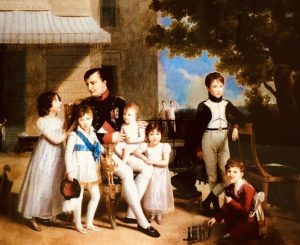
Napoléon’s admirers believe that the 1804 Napoleonic Code deserves to be seen alongside other famous civic texts such as the Declaration of Independence. Napoléon Bonaparte created the lycées, the baccalauréat, the préfets, the Banque de France and the Légion d’honneur.
Thierry Lentz, head of the Fondation Napoléon, who has written 46 books on the Napoleonic era says:
“The anniversary is a chance to tell people about the reality of the greatest man in French history. We owe who we are to Napoléon. We owe our institutions, our monuments, our laws- and even our pride at being French. The Napoleonic Code has been reformed, but it remains the cradle of our life as citizens, with its rules on equality before the law and civil liberty.”
Charles Bonaparte, 70, Napoléon’s great-great-grandnephew has published a book on Bicentenary of the death of Emperor Napoleon in which he says Napoléon modernized France and much of Europe.
Program of ceremonies on Saint Helena:
On May 5, 2021
At Longwood’s house, from 5:15 p. m.
The exact moment of the bicentenary of the Emperor’s death will be marked at Longwood House as follows:
– 17h15 Opening of the gardens (the house will be closed for this event)
– 17h30 Background music in the gardens
– 17h48 “La Sonnerie aux morts” followed by a minute’s silence
– 17h49 Last Post, lowering the flag to Half-mast
– 17:51 Continued:
– Reading of Napoleon’s death in Bertrand’s Cahiers.
– Music
– Letter from Montholon announcing to Lowe the death of Napoleon
– Night visit of the gardens under floodlights
Note: the house will be closed to visitors during the ceremony and the evening garden visit as was the case in 1821 when, with the exception of two doctors sent by Hudson Lowe, no one was admitted until the following morning.”
Napoleonic Heritage
April 2021:
From Privacy To Antitrust, Regulatory Scrutiny Of Big Tech Is Growing.

What Does This Mean For Digital Advertising?
“Despite the United States seeing an overall decline of over 32% in economic growth in 2020, share prices among tech giants soared and profits saw a boost compared to the year before. And yet, antitrust concerns and a growing emphasis on privacy have proliferated, leading to probes, lawsuits, and infrastructural changes.
To understand the implications this holds for the future of digital advertising, Gowthaman Ragothaman, talks about the technological infrastructure for privacy-compliant personalization.
“What we’re seeing today is a very crowded content landscape where consumers are constantly bombarded with marketing messages. Brands then rely on personalization to get in front of the right audiences at the right time. To gain access to these audiences, brands and advertisers have come to rely on platforms which has led to the rise of walled gardens. However, regulators are enacting new frameworks that demand a more stringent approach to how consumer data is collected, used, and shared with and by advertisers.
Meanwhile, consumers then contend with uncannily accurate ads or irrelevant marketing messages. In fact, according to the surveys disdain was equally expressed among boomers, gen-X, millennials, and gen-Z consumers in response to whether they liked it when advertisers used their personal data for audience targeting and personalization. Boomers and gen-X consumers expressed the most negativity with over 80% and over 63% respectively, against the practice.
There are two fallouts from these developments, which are now seeking a correction:
- Each of the platforms have built their own proprietary engagement technologies and brands are now struggling to have a unified view of these engagements.
- Personalization can be a deep rabbit hole. Continuous improvement and growth in these KPIs mean that at some point, lines are now being crossed over privacy from personalization — hence the backlash.
Consumer consent is the new mantra. More than a future beyond the dominance of big walled gardens, the focus should be self-regulation. With the incoming elimination of third-party cookies by 2022 on Google Chrome, brands have been forced to rethink their targeting strategies. With Apple’s latest IDFA updates on its mobile devices, one would expect that Android would follow suit as well.
In an ideal scenario, publishers will work together as part of a broader consortium, allowing brands to address ethically obtained first-party data points rather than navigating disparate data repositories.
For one, it was recently revealed that Google’s Federated Learning of Cohorts model couldn’t run in countries where GDPR and the ePrivacy Directive are in effect. Despite this being an alternative that supposedly offers greater privacy for users, regulators are arguing that it isn’t enough.
We need to strike a balance between privacy and profit, and this trade-off significantly varies between markets — therein lies the challenge for platforms in developing common standards and technologies. There’s also the issue of the omnichannel customer journey. In fact, across all generations, the opposition to the use of cross-channel data to personalize ads is significant. Despite their preference for authentic messaging, even 56.3% of gen-Z consumers stated they were against the practice, along with 64.7% of gen-X consumers.
There are new terms like “Privacy Budget” that are being talked about but one thing is for sure: independent user level identification will give way to cohort level communication for a large part of advertising unless and untilthere is explicit consent from that individual that he or she would like to receive promotional communications and they can be tracked.
Privacy is poorly understood. The language around consent is often hidden in greatly overlooked terms and conditions. Beyond accessibility barriers, there’s also significant variations in cultural understandings of privacy which results in fragmented regulatory guidelines in disparate geographies. What this shows is a dire need for standardization in this space.” Forbes
Staying In Compliance With Biometric Privacy Laws As A Business
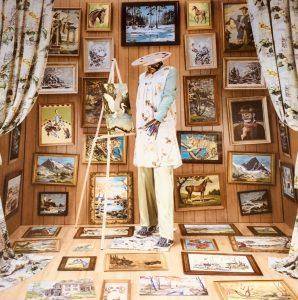
Maintaining Biometric Privacy Awareness
When it comes to biometric policy and keeping your liabilities to a minimum, the most important practice to adopt is to keep your ear to the ground. It’s still a developing legal field without a whole lot of case law to set precedents. As such, make the effort to watch how things develop in the future, and be ready to adjust the course when needed.
“With more companies using biometric data to serve customers and manage employees, a few states have developed laws to regulate the collection and use of this data. The most notable of these laws is the Illinois Biometric Information Privacy Act (BIPA), which has many businesses concerned.
While not all states have biometric privacy laws, the existence of the BIPA sets a precedent for anyone doing business within the U.S. There’s a possibility that more and more states will adopt similar laws in the future, and it’s important to be prepared should that happen in your jurisdiction.
What Biometric Privacy Laws Cover
Biometric privacy laws cover any data that is drawn from body measurements and human characteristics. The laws that are currently in existence typically regulate how this information is to be collected, used and stored, with rules requiring written notices and policies regarding biometric data.
Biometric data is defined as information that stems from calculations and measurements of human characteristics and behaviors. Some notable examples of biometric data include fingerprints, retinal scans, facial recognition, typing cadence, voice patterns, signatures, DNA scans and behavioral patterns such as web search histories.
This information is typically highly sensitive, even if it’s publicly available. Modern laws might present some challenges for businesses that collect this information.
Precisely what information is covered by biometric privacy laws might vary from statute to statute, but under the BIPA, it includes any biometric data that can be used to identify individuals. This data is protected regardless of how it is collected, whether gathered from customers or employees, or how it is converted or stored. Even if the information is encrypted or transformed in some way, BIPA and other laws can still consider it protected information.
Common Legal Requirements
In terms of the legal requirements regarding biometrics, statutes commonly require organizations to do the following:
• Notify people that they are collecting biometric data.
• Establish policies regarding the collection, use and storage of biometric information.
• Protect sensitive data with a “commercial standard of care.”
Put simply, businesses aren’t prohibited from collecting biometric data on their employees and customers, but they are required to disclose the fact that they collect this data and make their policies public. In addition, businesses are prohibited from selling biometric information, and they must make a reasonable effort to keep it secure.
Best Practices For Compliance
With BIPA and other biometric privacy laws potentially causing liability for businesses throughout the nation, it’s best to make an extra effort to ensure compliance with these laws. A few best practices to follow when striving for compliance with current and future laws include the following.
1. Outline all areas where biometric data is collected or used.
Make sure you’re clear on exactly how your business collects and uses biometric data. Look at all facets of your business, from interactions with customers to timekeeping with your employees. Take stock of all operations and types of data to make sure your bases are covered.
Not only do you need to identify the types of data you’re collecting, but you should also take inventory of why you’re collecting it. You’ll need to be able to state the purpose for the biometrics you gather as well as identify who it comes from.
2. Determine who needs to be notified.
Anyone from whom you’ve collected — or will collect — biometric data should be notified. Ideally, this notification should occur prior to collecting the data. Keep both customers and employees in mind, and figure out how you’ll make them aware of how you use their information.
3. Create clear policies on collection, use and retention.
BIPA and other laws require businesses to make clear policies on how they collect, store and use biometric data. On top of that, you’ll need to create a policy on how long that information will be retained along with disposal methods.
These policies do need to be made public, which can expose you to liability if you’re not in full compliance with them. As such, make sure your staff and management are properly trained on your policies and fully equipped to follow them.
4. Constantly update your policies and practices.
If any of your current policies end up being a bit out of line, make adjustments promptly. This is good practice even if your state doesn’t currently have any biometric privacy laws of its own. It may adopt them at some point, or you may end up doing business with customers/companies in states that do have such laws.
As such, it’s important to keep a close eye on legal developments in this area and adjust your internal policies as needed.
5. Take care with release agreements.
Biometric privacy laws might require release agreements from customers or others from whom you collect data. Take care that these release agreements do not make important services or employment conditional upon releasing biometric data. It could result in greater liabilities down the road, particularly as this field of law evolves.”
Forbes
L’art Qui Guérit
A Neuroscientist Reveals the Profound Real-World Benefits Art Has on Our Brains
Neuroscientist Pierre Lemarquis explains how we need “artistic medicine.”

“What can art do to help us? In the midst of a global health crisis, this question becomes even more urgent. While museums remain shuttered in many nations, there is science-backed evidence that seeing or making art can play a crucial role in healing our bodies and minds.
French neuroscientist, musician, and author Pierre Lemarquis has recently published a book on this fascinating subject. L’art Qui Guérit (translated: Art That Heals) takes the readers on an art tour through the centuries, spanning the Paleolithic period until the end of the 20th century, interpreting works through the lens of their healing powers—both for the viewer and the maker. The author weaves together art history, philosophy, and psychology while citing astounding current findings from his field of neuroscience about the healing power of art.
Research on the subject has been accumulating for some years. A 2019 World Health Organization report, based on evidence from over 3000 studies, “identified a major role for the arts” prevention of illnesses. And in 2018, doctors in Montreal, Canada, made headlines when they started prescribing patients who suffer from certain diseases with museum visits: to visit the Montreal Museum of Fine Arts.
“A current is making its way in this direction,” says Lemarquis on a video call with Artnet News. He divides his time between actively “bringing back” the arts to the medical profession, working as a clinical neurologist, and teaching brain function at the University of Toulon in southern France.
Lemarquis is also president of a new French association called L’invitation à la beauté (An Invitation to Beauty), which offers “cultural prescriptions” to patients, including artwork viewings. The UNESCO-supported organization has created an art collection of original works to loan to patients for their rooms at France’s Lyon Sud Hospital, and this program is set to expand.
But how, exactly, can experiencing art make a person healthier? How can it help treat illness?

When We See Art, We ‘Participate’ In Its Creation
In the last couple decades, neurological findings have shed light on what happens to the brain when it experiences art. Lemarquis’s book details this new sub-field of “neuroaesthetics” which uses technologies like functional Magnetic Resonance Imaging to examine which brain pathways are engaged by either making or contemplating an artwork, and to what extent they are stimulated.
Analyzing symbolism and subject matter, Lemarquis also writes that feelings of “rebirth” are made possible. He cites visits to Michelangelo’s Sistine Chapel, as well as Niki de Saint Phalle’s giant 1966 sculpture, the HON – en katedral, where visitors could enter the sculpture’s vaginal opening.
What may seem intuitive, but is scientifically demonstrated in Art That Heals, is that art of all kinds acts on our brains in a multi-faceted, dynamic way. Neural networks are formed to achieve heightened, complex states of connectivity. In other words, art can “sculpt” and even “caress” our brains. So when we say a work of art moves us, that is physically the case.
Lemarquis explains that, in a process helped by mirror neurons, activated when observing art, we can get the feeling that we are participating in art’s creation, or putting ourselves in the artist’s shoes. Our brains even have a tendency to “think” they are interacting with a biological entity when perceiving a figurative painting of a person, for instance.
The beneficial effects of the arts were noted as far back as Classical antiquity,” writes Lemarquis, referring to Aristotle, who described the sensation of catharsis when observing a theatrical production, or emotions incarnated by the actors, which helped viewers better understand their own thoughts and sensations.
Later in history, Stendhal, the 19th century French author, wrote of nearly fainting upon seeing frescoes in the Basilica of Santa Croce in Florence, where he felt, “a kind of ecstasy” from being “absorbed in the contemplation of sublime beauty.” It made his heart beat so fast, he thought he’d collapse. Lemarquis attributes this reaction to his “brain invaded by emotions stimulated by the rise of adrenaline [on] his autonomous nervous system.”
But it can be hard to pinpoint what we feel about an art piece. That is in part because our reaction is the dynamic result of neural stimulation that combines areas of the brain that normally don’t operate together: the deeper recesses of our minds, which govern the pleasure and reward system, as well as other systems dealing with knowledge, perceptual, and motor circuits. Lemarquis writes that, as a result of these processes, we start to experience “aesthetic empathy,” or the impression that an artwork is part of us—that we’ve embodied its “spirit.”
“This constant back-and-forth, this empty space between the two, is the source of everything— the meaning of life,” adds Lemarquis in the interview.
How Art Can Help Cure
As Lemarquis explains, the art-activated areas of our brains that light up when both making or contemplating art, release hormones and neurotransmitters when stimulated, which are beneficial to our health and make us feel good.
These include dopamine (lacking among Parkinson’s patients), serotonin (found in antidepressants) as well as endorphins and oxytocin, which both can support pain management and reduction. Adrenaline and cortisone can be activated so as to have an invigorating effect on the body, or on the contrary, they can be blocked for a relaxing effect, depending on the artwork. All of these hormones can help treat mental illness, memory loss, or illnesses associated with stress, among other health concerns.
In one example from the book, a hospitalized patient in France suffering from chronic wounds on her legs finds motivation to become more active after a painting of a dancer was hung at her request in her room. It distracted her from her illness and “via mimicry, she started trying to move her legs, while simultaneously asking for fewer doses of painkillers. Little by little, she extended her walking ability, so much so, that her muscle-loss slowed, improving blood circulation, and aiding in the healing of wounds.”
In addition, some artists have been known to consciously compose their works to help heal viewers, such as the German Renaissance painter, Matthias Grünewald, whose famous Isenheim Altarpiece commissioned for a hospital was meant to inspire a sense of “inner balance” among the sick patients there. Similarly, Navajos Native American in North America have long-used healing rituals that involve art and beauty, to help “restore interior harmony” to the sick.
Interestingly, this interaction seems to work best with art that “is not a photocopy,” according to the neurologist. Lemarquis says an “unfinished” aspect of the work—the touch of its creator—helps the observer gain a sense of their own participation. Similarly, science has shown we feel a “distance” from artwork reproduced on a screen, compared to being in its physical presence.
“Our brains capture a lot more information than we are conscious of,” he says. When perceiving an artwork in-person, for instance, the brain is “lit up, by something akin to beams from a lamp.” But when the level of exposure to the work is “weakened,” as it is with a screen image, he says “quantities of information, and consequently, possible (neurological) interactions” are lost.”
Healing the Heart and the Head
Lemarquis has seen first-hand the positive impact of the arts on patients. “Will it cure them?” he says in our interview. “Maybe not, but it will allow them to better manage their illness, and once they can manage it better, they’re on the road to recovery.”
Responses have been overwhelmingly positive from patients who say they feel “less alone” at the Lyon hospital, where the group, L’invitation à la beauté, of which Lemarquis is a part, has set up an art and poetry collection for their “cultural prescriptions.” Caregivers reported patients became more mobile when exposed to their chosen artwork, which leads to improved healing in those cases. Most were noticeably more relaxed, and cheerful. L’invitation à la beauté is now set to expand its art collection to the gastro-pediatric service at a children’s hospital in Lyon. Similar initiatives are sprouting around the world. In the US, the NeuroArts Blueprint from the Aspen Institute and the International Arts + Mind Lab (IAM Lab) at John Hopkins University, launched in September 2020. The organization says it aims to “advance the science of arts, health, and well-being” by helping “build the emerging field of neuro/arts—the storehouse of robust scientific evidence that tells us art can change the brain and the body and advance well-being in ways that can be measured, mapped, and put into practice.”

“You don’t treat an illness, you treat a person,” says Lemarquis. “You need medicine that’s purely scientific to address the illness, and medicine that’s a little artistic, to address the person, their humanity. The two are complementary. People need to dream. They need imagination.”
Artnet
March 2021:
Living Near Water Can Be Beneficial to Your Mental Health

“We know that people are more likely to experience mental health disorders in areas with greater population density. Overcrowding, pollution, urban violence and less social support may all be contributing factors, and this is becoming more of a challenge as more people around the world moving into towns and cities.
Natural settings have long been seen as a potential solution, since many studies have shown that when people are closer to nature they are less stressed, and their mood and general mental health improve. There has been much research into using therapeutic landscapes in cities to bring the benefits of being in nature to more people.
But while plenty of studies have focused on green spaces, researchers are also beginning to look at the health benefits of living near water. So far, studies show that people living near water have a lower risk of premature death, a lower risk of obesity, and generally report better mental health and well-being. These blue spaces also reduced the gap between less and more affluent areas in the risk of dying prematurely.
But while being close to water enhances people’s wellbeing, no research has yet shown that it reduces the incidence of mental health disorders. Most studies have also focused on coastal towns rather than cities.
Given that even landlocked cities are built around water features like canals, rivers and lakes, our research aimed to uncover their health benefits, and how they could be repurposed to improve the mental health of people living in cities.
Mental health connection
We conducted a systematic review and meta analysis of all the evidence about how blue space positively impacts health. This showed that living closer to and having more blue space within your neighbourhood could significantly increase your physical activity levels. Blue spaces were also shown to lower stress and anxiety, while boosting people’s mood and psychological wellbeing. Our findings align with what other studies have found.
Researchers studying the effects of blue space delivered through virtual reality have also found that people see it as restorative, fascinating, and preferable to a built-up environment. This shows how technology could be used as a way of studying how being near water affects people.
Our next area of research will be to understand how blue spaces benefit people in these ways. We also think that having more stretches of water in cities could improve the population’s health in other ways, such as reducing heat and lowering air pollution. But more research will be needed to effectively understand whether this is true.
Creating blue spaces
But if the early evidence points to lots of health benefits from living near water, the problem many cities encounter is finding ways to bring them to residents. During the Victorian era, canals in the UK were tremendously important to the economy. Canals allowed trade to happen and helped workers to move around. There’s still a huge network of these waterways in many UK cities, but very few of them are in use. there are more canals in Birmingham than in Venice. But access to them is often blocked by tall buildings or fences, and their potential is far from being exploited. Derelict canals can sometimes even cause environmental problems, such as plastic litter pollution, which can reduce biodiversity and harms wildlife.
Efforts in Scotland to regenerate canals are a good example. Land that was previously flooded by rainwater has seen new homes and businesses built. Walking paths along the canals have also been created, allowing people to visit the canals, even while further development is underway.
While further research is needed to better understand the true benefits that blue spaces have on residents, it is clear that finding ways to repurpose derelict canals in cities could have other benefits to the environment and economy too.”
Neuroscience Journal
Eight Ways Chemical Pollutants Harm the Body

“A new review of existing evidence proposes eight hallmarks of environmental exposures that chart the biological pathways through which pollutants contribute to disease: oxidative stress and inflammation, genomic alterations and mutations, epigenetic alterations, mitochondrial dysfunction, endocrine disruption, altered intercellular communication, altered microbiome communities, and impaired nervous system function.
The study by researchers at Columbia University Mailman School of Public Health, Ludwig Maximilian University, and Hasselt University is published in the journal Cell.
“Every day we learn more about how exposure to pollutants in air, water, soil, and food is harmful to human health,” says senior author Andrea Baccarelli, MD, Ph.D., chair of Environmental Health Sciences at Columbia Mailman School. “Less understood, however, are the specific biological pathways through which these chemicals inflict damage on our bodies. In this paper, we provide a framework to understand why complex mixtures of environmental exposures bring about serious illness even at relatively modest concentrations.”
We are continually exposed to a mixture of pollutants, which lead to changes in our bodies in multiple domains, from conception to old age. They govern gene expression, train and shape our immune systems, trigger physiological responses, and determine wellbeing and disease.
The paper summarizes evidence for eight hallmarks of environmental insults:
1. Oxidative stress and inflammation: When antioxidant defenses are depleted, inflammation, cell death, and organ damage occur.
2. Genomic alterations and mutations: An accumulation of DNA errors can trigger cancer and other chronic diseases.
3. Epigenetic alterations: Epigenetic changes alter the synthesis of proteins responsible for childhood development and regular function of the body.
4. Mitochondrial dysfunction: A breakdown in the cellular powerplant may interfere with human development and contribute to chronic disease.
5. Endocrine disruption: Chemicals found in our environment, food, and consumer products disrupt the regulation of hormones and contribute to disease.
6. Altered intercellular communication: Signaling receptors and other means by which cells communicate with each other, including neurotransmission, are affected.
7. Altered microbiome communities: An imbalance in the population of bacteria and other microorganisms in our body can make us susceptible to allergies and infections.
8.Impaired nervous system function. Microscopic particles in air pollution reach the brain through the olfactory nerve, and can interfere with cognition.
Not all environmental exposures are harmful. The researchers note that exposure to nature has been reported to have beneficial impacts on mental health.
These eight hallmarks are by no means comprehensive and do not capture the full complexity of the chemical and physical properties of environmental exposures, including mixtures of exposures over the short and long-term. Further research is needed to understand the complex mechanisms by which exposures affect human biology, and how altered processes interact and contribute to disease or confer health benefits, across the life course.
“We need research to expand our knowledge of disease mechanisms going beyond genetics.
Advances in biomedical technologies and data science will allow us to delineate the complex interplay of environmental insults down to the single-cell level,” says Baccarelli. “This knowledge will help us develop ways to prevent and treat illness. With the serious environmental challenges like air pollution and climate change, most of all, we need strong local, national, and inter-governmental policies to ensure healthy environments.” Neuroscience Journal
Only 2% of Conversations End When We Want Them To

“Everyone’s familiar with the sensation of being trapped in a conversation for too long – be that over the garden fence or by the office water cooler. On the other end of the spectrum, we’ve also experienced conversations that seem to end prematurely, leaving us dissatisfied and maybe even a little hurt.
Now, a Harvard study has found that this conversational disappointment may in fact be incredibly common. Involving 992 participants taking part in two-way discussions, the study found that less than 2% of conversations ended when both partners wanted them to. This figure was remarkably stable, irrespective of whether people were talking to.
The authors of the study believe this discrepancy is the result of a classic “coordination problem”, arising because people tend to hide their true desires, including when they want a conversation to end, in an effort to avoid being rude.
But our experience in conversation analysis would add that ending conversations elegantly is an elaborate social skill with many complex moves: akin to a final pirouette in a dance, or the crescendo in a piece of music. That means many conversations overrun for the sake of politeness and social solidarity, reaching a compromise that may suit neither party, but which crucially, and admirably, avoids offence.
Speak easy
Conversations may seem simple, but they’re actually incredibly skillful affairs. They involve our navigation between thousands of cues, often responding instantly and appropriately to the subtlest of hints.
We do all this automatically, often without recourse to conscious thought. And yet the Harvard study suggests that 98% of our conversations end unskillfully: reaching an unsatisfying conclusion either too early or too late.
In part, this communication gap is due to speakers hiding their desires from one another: the coordination problem. But it’s also a result of the rules that govern the way we talk with each other, and the way these rules compel us to cut short or extend our conversations.
Even free-flowing conversations follow a formal order and a set of rules, according to the systematic analysis of conversation. Even though most of us are unaware of these rules, we tend to follow them automatically, drawing on learning gained very early in life.
Dancing dialogue
To understand why the rules the govern our chit-chat result in our conversations ending too early or too late, it helps to see a conversation as a cooperative activity, a little like a dance.
Just as partners in the tango respond to tiny hints and cues to direct their movements, conversations also involve a long string of micro-adjustments. And just as the tango ends with a flourish, conversations also tend to end with a set of moves that help partners reach a mutually agreed end point.
Endgame
To end a conversation, a social action is often used to avoid making a faux pas. These social actions are called closing routines, during which speakers confirm to each other that they are truly done. Saying “anyway” or “alright” in a certain tone can help precipitate a closing routine.
These closing routines often follow very specific moves. They first require a pre-closing statement, which announces the intention to end the conversation. This must be accepted by both parties in order for the next stage to start, which might in turn build to a familiar conversational conclusion and final salutations.
The problem is, closing routines tend to skew conversations away from their ideal point of conclusion. A participant may begin a closing routine too early after misinterpreting a cue, as when their partner says “anyway” without intending to begin a closing routine. On the other hand, a correctly initiated closing routine can still take some minutes to wrap up, which extends conversations beyond what one or more participants may deem their ideal duration.
The Harvard research exposes a fascinating aspect of our conversational behaviour, but its findings shouldn’t lead us to regard the majority of our conversations as interminable drags or brutally shortened chats.
Instead, the finding that only 2% of our conversations end when both participants want them to is, in a sense, cause for celebration. It means that the remaining 98% are instead conforming to the rhythm of the conversational dance: cooperating and responding to cues and prompts until they can part company – all without stepping too heavily on each other’s toes.” Neuroscience Journal
Human Eye Beats Machine in Archaeological Color Identification Test


“A ruler and scale can tell archaeologists the size and weight of a fragment of pottery – but identifying its precise color can depend on individual perception. So, when a handheld color-matching gadget came on the market, scientists hoped it offered a consistent way of determining color, free of human bias.
But a new study by archaeologists at the Florida Museum of Natural History found that the tool, known as the X-Rite Capsure, often misread colors readily distinguished by the human eye.
When tested against a book of color chips, the machine failed to produce correct color scores in 37.5% of cases, even though its software system included the same set of chips. In an analysis of fired clay bricks, the Capsure matched archaeologists’ color scores only 35% of the time, dropping to about 5% matching scores when reading sediment colors in the field. Researchers also found the machine was prone to reading color chips as more yellow than they were and sediment and clay as too red.
“I think that we were surprised by how much we disagreed with the instrument. We had the expectation that it would kind of act as the moderator and resolve conflicts,” said Lindsay Bloch, collection manager of the Florida Museum’s Ceramic Technology Lab and lead study author. “Instead, the device would often have an entirely different answer that we all agreed was wrong.”
Identifying subtle differences in color can help archaeologists compare the composition of soil and the origins of artifacts, such as pottery and beads, to understand how people lived and interacted in the past. Color can also reveal whether materials have been exposed to fire, indicating how communities used surrounding natural resources.
Today, the Munsell color system, created by Albert Munsell in 1905 and later adopted by the U.S. Department of Agriculture for soil research, is the archaeological standard for identifying colors. Researchers use a binder of 436 unique color chips to determine a Munsell color score for artifacts, sediment and objects such as bones, shell and rocks. These scores enable archaeologists around the world to compare colors across sites and time periods. But the process of assigning scores can vary based on lighting conditions, the quality of a sample and the perspective of the researcher.
This study is the first to test and record the accuracy of the X-Rite Capsure, a device made by the same company that owns the color authority Pantone. Although marketed to archaeologists, the device was originally designed for interior designers and cosmetologists, not research, Bloch said.
“I think the main takeaway was just sort of surprise that it’s something that is marketed for our field, specifically for archaeologists, but hasn’t been made for us and the kind of data we need to collect,” she added. “When you read the manual, it says you should always verify that the color the machine tells you looks right with your eyes, which seems to negate the use of the instrument.”
In an experiment designed with the help of University of Florida undergraduate researchers Claudette Lopez and Emily Kracht, the team tested the Capsure’s readings of the three elements of Munsell’s system: a color’s general family, or hue; intensity, also known as chroma; and lightness, also called value.
The team first tested the Capsure on all 436 Munsell soil color chips, rating its reading as correct if it matched the exact score on a chip three out of five times. It correctly scored 274 chips. Of its errant readings, about 75% were misidentifications of hue. The Capsure was consistent, though often wrong, producing the same reading five times for 89% of the chips.
To determine how well the machine performed in a typical laboratory setting, the team tested its color readings of 140 pottery briquettes that had been assigned Munsell scores by Lopez. The Capsure matched the archaeologist’s scores in 35% of cases, again tending to misread hue. It proved consistent in this second test as well, yielding the same score across all trials of more than 70% of the briquettes.
In the most challenging of color-identification conditions – outdoors, where lighting and texture can vary – the machine only matched archaeologists’ scores of sediment samples about 5% of the time, often rating a shade darker or lighter. For one sample, the Capsure reported colors from five different families, even though archaeologists agreed the sediment was a single hue. Bloch said the discrepancy was likely due to moisture, sand and shells, which don’t usually interfere with human observations.
Unlike some other methods of identifying color, the Capsure is a remote control-sized device that can provide a reading in seconds. Bloch said the tool’s simple design and accessibility lend it to other scientific applications, but that the team’s results point to a need for further scrutiny of how archaeologists record color.
This new tool has really forced us to see that color is subjective and that, even with a supposedly objective instrument, it may be much more complicated than we’ve been led to believe,” she said. “We need to pay really close attention and record how we’re describing color in order to make good data. Ultimately, if we’re putting bad color data in, we’re going to get bad data out.”
Bloch said she would give the Capsure three out of five stars for being easy to use and offering helpful ways to store data.
“The ding is for the quality of data because it’s still kind of unknown. At this point, I think that our team would say the subjective eye is better.” Neuroscience Journal
February 2021:
Recognizing Liars From the Sound of Their Voice?

“Faster speech rate, greater intensity in the middle of the word, and falling pitch at the end of the word: that is the prosody to adopt if one wants to come across as reliable and honest to one’s listeners.
Scientists from the Science and Technology for Music and Sound laboratory (CNRS/Ircam/Sorbonne Université/Ministère de la Culture) and the Perceptual Systems Laboratory (CNRS/ENS PSL) have conducted a series of experiments to understand how we decide, based on the voice, whether a speaker is honest and confident, or on the contrary dishonest and uncertain.
They have also shown that this signature was perceived similarly in a number of languages (French, English, Spanish), and that it is registered “automatically” by the brain: even when participants were not judging the speaker’s certainty or honesty, this characteristic sound impacted how they memorized the words.
Prosody consequently conveys information on the truth-value or certainty of a proposition.
Scientists are now trying to understand how speakers produce such prosody based on their intentions.” Neuroscience Journal
Why Facebook and Apple are fighting over your privacy

“Facebook and Apple’s fight over your data is heating up. Apple’s tracking-optional mobile operation system update is coming to iPhones this spring, and the new privacy-preserving features will give users the ability to opt out of being followed around the internet via trackers in their apps. Facebook — which makes the vast majority of its money from data collected through those trackers — really doesn’t like Apple’s new features. Now Facebook is considering suing Apple, and Apple is digging in its heels.
This week saw the latest exchange of words between the two companies in a standoff that’s been going on for months. On Wednesday, Facebook CEO Mark Zuckerberg said in a quarterly earnings call that “we increasingly see Apple as one of our biggest competitors,” accusing Apple of using its “dominant platform position” to push its own apps while interfering with Facebook’s. Zuck added that Apple may frame this as a privacy service to its customers, but it’s really only in Apple’s own best anti-competitive interests. The next morning, the information reported that Facebook was preparing an antitrust suit against Apple over its App Store rules.
Apple is not backing down. On Thursday, CEO Tim Cook spoke at the Computers, Privacy and Data Protection conference. In his keynote address, Cook never mentioned Facebook by name, but the target of his pointed remarks about data and advertising was obvious.
“Technology does not need vast troves of personal data, stitched together across dozens of websites and apps, in order to succeed,” Cook said. “Advertising existed and thrived for decades without it. And we’re here today because the path of least resistance is rarely the path of wisdom. If a business is built on misleading users, on data exploitation, on choices that are no choices at all, then it does not deserve our praise. It deserves reform.”
The reform Cook is talking about would look like a mobile operating system that prevents companies from accumulating said vast troves of personal data, and Apple’s latest efforts bring its own mobile operating system, iOS, pretty close to that ideal. The iPhone maker has incorporated several privacy protections into its products and services over the years. In iOS 14, apps will have to tell users what information they collect and get their permission to do it. Some of these features are already live, including the so-called privacy nutrition labels, which are supposed to tell users if their data is being collected, how, and why.
A potentially bigger deal, for users and developers alike, is the upcoming App Tracking Transparency feature, which will require apps to get users’ permission to track them across other apps and websites. If users say no — and it’s likely that most of them will, given that people generally don’t like being tracked — companies that use targeted advertising will lose a major source of data, and, therefore, revenue. So Apple’s move could significantly harm the very mobile app ecosystem its iPhone helped to create.
Facebook, a company that has not historically been a major proponent of user privacy, is one of the biggest data collectors of all. Its trackers are buried in tons of mobile apps and on websites and Facebook uses the data they collect for ads on its platforms and its Audience Network mobile app ad service. So you can imagine that the social media giant/data vacuum was somehow alarmed to find out that potentially millions of iPhones would soon have a way to cut off some of those data streams. Facebook certainly isn’t the only company to balk at Apple’s new rules, but it is one of the biggest.
This is good for both companies because Apple’s users want Facebook’s apps (Facebook, Instagram, and WhatsApp) on their iPhones, and Facebook wants their apps in front of as many people as possible. They may be feuding publicly — as they’ve done for years- but their mutually beneficial relationship is still very much intact.” Vox
Bee Extinction Worries Grow as Species Numbers Drop

The number of reported bee species has dropped 25% from the 1990s
“Fewer bee species have been recorded since the 1990s, raising concerns that rare species might be extinct.
About 25% fewer species were found between 2006 and 2015, compared to records prior to the 1990s, according to a study published on Friday in the One Earth Journal. The authors are researchers at Argentina’s Consejo Nacional de Investigaciones Científicas y Técnicas (CONICET).
Something is happening to the bees,” said biologist Eduardo Zattara, the report’s first author. “It’s not a bee cataclysm yet, but what we can say is that wild bees are not exactly thriving.”
Wild and managed bees are essential pollinators that ensure the reproduction of thousands of wild plant species and 85% of all cultivated crops. Mounting reports show that the decline in wild bee populations might follow, or even be more pronounced, than declines in insect populations. Many animal populations are decreasing drastically, scientists have already warned.
Sightings of rarer types of bees have fallen more sharply than those of more common families, researchers found. Records of Melittidae, a bee family found in Africa, have gone down by as much as 41% since the 1990s, while Halictid bees, the second-most common family, have declined by 17% during the same period.
Most bee studies focus on declining populations focus on a specific area, or on a particular type of bee. Instead, CONICET researchers examined the number of species recorded around the world over more than a century.
To do that, they used the Global Biodiversity Information Facility, an international network of databases that contains over three centuries of records from museum specimens, universities and geotagged smartphone photos shared by amateur naturalists in recent weeks. The network accounts for over 20,000 known bee species all over the world.
The results are subject to some uncertainty mainly because of the variety of data sources, making it impossible to reach definitive conclusions on individual species, researchers said. Technology has allowed for the recording of higher numbers of bees, but fewer species are being seen. Even accounting for possible distortions on the data, the trend is clear and matches that of previous, narrower reports. Given the current outlook of global biodiversity, it is more likely that these trends reflect existing scenarios of declining bee diversity,” the report said. “In the best scenario, this can indicate that thousands of bee species have become too rare; under the worst scenario, they may have already gone locally or globally extinct.”
Researchers conducted similar analysis on other insects to see if variations in bee species numbers were mirrored elsewhere, which would have been an indication that the changes had to do more with data collection and sources than with actual trends.
The populations of two wasp families also appear to be declining, but presented different patterns than bees’. Ant species, in contrast, have increased over the same period of time.
“We cannot wait until we have absolute certainty because we rarely get there in natural sciences,” Zattara said. “The next step is prodding policymakers into action while we still have time. The bees cannot wait.” Bloomberg
January 2021:
How Amazon Sidewalk Works—and Why You May Want to Turn It Off Because of Privacy Issues

“IF YOU HAVE Amazon devices as part of your smart home, there’s a new service on the block you should be aware of—and as usual, there are both potential benefits and potential privacy implications to think about as you consider whether you want to be a part of it.
The technology in question is Amazon Sidewalk, which Amazon itself bills as “a new way to stay connected.” Simply put, it uses Amazon smart-home gear to create a series of mini mesh networks, meaning your devices can stay connected further away from your router, and even stay online when your Wi-Fi goes down.
This is made possible through Bluetooth and unused slices of the wireless spectrum, with Ring cameras and Echo speakers acting as the main bridges (actually called Sidewalk Bridges) to keep everything hooked up. For something to work with the network, it’s going to need to be compatible with the Sidewalk standard.
Even if your Ring camera is down at the end of the garden, out of reach of your main router, Sidewalk might be able to reach it through a device that’s closer. The network can’t carry much data at once, but these smart home gadgets don’t necessarily need much bandwidth to stay online.
The potential range of the network is decent—up to half a mile depending on the setup—and Sidewalk is free for Amazon customers to use once they’ve bought the hardware. As an added bonus, it’ll speed up the process of adding new Amazon devices to your smart home, as your existing hardware will be able to lend a hand with Wi-Fi connections and so on.
So far so tempting, but the more controversial part of Amazon Sidewalk is the way it shares some of your internet bandwidth with your neighbors (and gets some back in return), creating a much wider network of devices that can operate independently. If your internet goes down, your Ring camera can connect to the internet next door to keep sending you alerts, assuming both of you are set up with Sidewalk.
Likewise, if your neighbor’s internet goes down, their smart devices can temporarily connect to your router and the Sidewalk network you’ve created. If Amazon has its way, entire blocks will become Sidewalk networks, improving reliability and stability for all the smart devices contained inside them.
Tile trackers are also Sidewalk compatible, which means that they can report their location when they’re in range of any of these bespoke networks, not just your own—potentially very useful if your dog or your laptop goes missing outside of your own Wi-Fi network, but has a Tile tracker attached and can be located by one of the Sidewalk networks you’re connected to.
Amazon says that bandwidth usage by each Sidewalk network is capped at 80Kbps, or around 1/40th of the bandwidth used to stream a high definition video—the network won’t take up any more of your internet connection than that. What’s more, Amazon promises never to use more than 500MB of data in a month, which is the same as streaming about 10 minutes of high definition data.
Amazon has published a white paper on the privacy and security surrounding Sidewalk, perhaps to head off any uneasiness about sharing even a small sliver of your Wi-Fi with the people living around you. The system will “minimize data tied to customers” across Sidewalk, with neither Amazon nor your neighbors able to snoop on what’s happening on your network or the devices you’ve got.
All that said, it really comes down to how much you trust Amazon—the company that seems keen to collect as much data as possible about you, shares Ring camera information with law enforcement agencies and which hasn’t always protected sensitive user data quite as robustly as it might have done. The company has also said it might share Sidewalk data with third-party developers further down the line, and you know where that kind of data sharing tends to lead.
If you end up deciding that Amazon Sidewalk isn’t for you, you need to take action: It’s on by default, once the software update has hit your devices (it’s also on by default for users setting up an Amazon-powered smart home for the first time.) If you want to turn it off, you need to open up the Alexa app on your phone, and go to More, Settings, Account Settings, and Amazon Sidewalk and turn it off.” Wired
How COVID-19 Is Likely to Impact the Brain

“An article published Jan. 5 in Alzheimer’s & Dementia: The Journal of the Alzheimer’s Association cites decades of published scientific evidence to make a compelling case for SARS-CoV-2’s expected long-term effects on the brain and nervous system.
Dementia researchers from The University of Texas Health Science Center at San Antonio (UT Health San Antonio) are the first and senior authors of the report and are joined by coauthors from the Alzheimer’s Association and Nottingham and Leicester universities in England.
“Since the flu pandemic of 1917 and 1918, many of the flulike diseases have been associated with brain disorders,” said lead author Gabriel A. de Erausquin, MD, PhD, Msc, professor of neurology in the Joe R. and Teresa Lozano Long School of Medicine at UT Health San Antonio. “Those respiratory viruses included H1N1 and SARS-CoV. The SARS-CoV-2 virus, which causes COVID-19, is also known to impact the brain and nervous system.”
Dr. de Erausquin, an investigator with the Glenn Biggs Institute for Alzheimer’s and Neurodegenerative Diseases at UT Health San Antonio, said it is becoming clear that the damage done by the pandemic will not be limited to acute effects, such as delirium in the hospital, but will have chronic consequences that impact many individuals’ quality of life and independence.
The question is to what degree and under what form. Even mild COVID-19 infections may have negative effects on the brain long term, Dr. de Erausquin said.
The basic idea of our study is that some of the respiratory viruses have affinity for nervous system cells,” said senior author Sudha Seshadri, MD, professor of neurology in the Long School of Medicine at UT Health San Antonio and director of the Glenn Biggs Institute. “Olfactory cells are very susceptible to viral invasion and are particularly targeted by SARS-CoV-2, and that’s why one of the prominent symptoms of COVID-19 is loss of smell.”
The olfactory bulb connects with the hippocampus, a brain structure primarily responsible for short-term memory.
“The trail of the virus, when it invades the brain, leads almost straight to the hippocampus,” Dr. de Erausquin said. “That is believed to be one of the sources of the cognitive impairment observed in COVID-19 patients. We suspect it may also be part of the reason why there will be an accelerated cognitive decline over time in susceptible individuals.”
The authors point out that:
- Intranasal administration of SARS-CoV-2 in mice results in rapid invasion of the brain.
- Headache, hypogeusia (reduced ability to taste) and anosmia (loss of smell) appear to precede the onset of respiratory symptoms in the majority of affected patients.
- SARS-CoV-2 can be found in the brain post-mortem.
- Abnormal brain imaging that may be characterized by the appearance of lesions in different brain regions – and the appearance of other abnormal brain changes that may influence clinical presentation – has emerged as a major feature of COVID-19 from all parts of the world.
- Abnormal imaging was seen in an individual whose only symptom was loss of smell.” Neuroscience Journal
Italy’s Uffizi opens Dante anniversary with virtual exhibit

“Florence’s Uffizi Gallery has made available for viewing online 88 rarely displayed drawings of Dante’s “Divine Comedy” to mark the 700th anniversary in 2021 of the Italian poet’s death.
The virtual show of high-resolution images of works by the 16th-Century Renaissance artist Federico Zuccari is for free, any hour of the day, for everyone,’’ said Uffizi director Eike Schmidt.
The drawings illustrate Dante’s masterpiece, “The Divine Comedy,” an epic poem in three parts recounting a pilgrim’s travels through hell, purgatory and heaven.
Dante Alighieri is revered as the father of the Italian language. A Tuscan by birth, he died and was buried in the city of Ravenna, a three-time ancient capital located in the region of Emilia-Romagna.
The pencil-and-ink drawings are in contrasting shades of black and brown. They were completed during Zuccari’s stay in Spain from 1586 to 1588, and became part of the Uffizi collection in 1738.
The drawings have only been publicly displayed twice previously, and then only a selection, owing to their fragility: in Florence in 1865 to mark the 600th anniversary of Dante’s birth and coinciding with Italy’s unification as a nation, and for a specialized exhibit about Dante in Abruzzo in 1993.
The drawings were originally bound in a volume, with each illustration opposite the corresponding verse in Dante’s epic poem. The texts and scholarly comment will also be included in the virtual show, titled “A riveder le stelle,” (to see the stars again), a reference to the celebrated last line of Dante’s “Inferno.”
Schmidt said the drawings are a “great resource” for Dante scholars and students, as well as “anyone who likes to be inspired by Dante’s pursuit of knowledge and virtue.”
Sparklight
The Internet of Senses: Your Brain Is the User Interface

By 2030, we will all experience The Internet of Senses (IoS), enabled by AI, VR, AR, 5G, and automation.
“The term Internet of Things (IoT) was coined by British technology pioneer Kevin Ashton. The innovator and consumer sensor expert, defined the IoT back in the year 1999. He used the Internet of Things term to describe the network connecting objects in the physical world to the Internet during his work at Procter & Gamble.
Ashton, who was working in supply chain optimization, wanted to attract senior management’s attention to a new technology called Radio-Frequency Identification (RFID).
Radio-frequency identification technology uses electromagnetic fields in order to automatically identify and track tags attached to objects. An RFID tag consists of a tiny radio transponder; a radio receiver, and a transmitter. And Ashton was working on this field when he came up with the Internet of Things to explain his work.
It took a while until the general public began to understand what The Internet of Things was all about and how this early trend was going to grow strong during the next couple of decades. It was only during the last few years that people began to fully understand the Internet of Things.
From that first use of the term Internet of Things, fast-forward 20 years, and humanity contemplates the birth of The Internet of Senses, one of the emerging consumer technology trends for 2021 toward 2030.
Exploring the future from an early adopter user perspective
Ericsson Consumer Lab predicts that by 2030, we will all experience The Internet of Senses (IoS). ConsumerLab found that consumers expect an array of beneficial services from connected technology interacting with our senses of sight, sound, taste, smell, and touch to be a reality by 2030.
Today, we are exploring what the first trend, the brain as the user interface, is all about.

The Internet of Senses will be enabled by technologies such as Artificial Intelligence (AI), Virtual Reality (VR), Augmented Reality (AR), 5G, and automation. The main drivers for the Internet of Senses include immersive entertainment and online shopping, the climate crisis and the corresponding need to minimize climate impact.
Many predict that by 2030, the lines between thinking and doing will blur. Fifty-nine percent of consumers believe that we will be able to see map routes on VR glasses by simply thinking of a destination
By 2030, technology is set to respond to our thoughts, and even share them with others. Think what that will mean; think, and that will mean.
Using the brain as an interface could mean the end of keyboards, mice, game controllers, and ultimately user interfaces for any digital device. The user needs to only think about the commands, and they will just happen. Smartphones could even function without touch screens.
According to the report, this opens up new device categories with entirely new interaction paradigms. Among those, the highest consumer expectations are on Augmented Reality (AR) glasses.
Six in 10 early adopters respondents are expecting that thinking show map would display a map right before their eyes. They also expect to be able to search for routes simply by thinking of the destination.
With these AR capabilities available, many other applications that are almost unimaginable today suddenly become quite straightforward. Have you ever met someone who seemingly knows you, and yet you cannot place them, or even remember their name?
This problem will be eliminated by 2030 as — according to 54 percent of consumers — in response to thought requests, AR glasses will show them information about people they meet, such as their name, or where they met before.
How would you like your thoughts to become fully accessible by technology? According to the report, that would be the implication this technology would bring. In other words, it can be cool if you are playing a video game, or try to find your way in a new destination. But what happens when you want to keep your thoughts to yourself? Is that going to be possible, or will become a thing of the past?
Forty percent even believe they will have the ability to directly share thoughts with their friends and loved ones. But then again, what about those thoughts you do not want to share with anyone?
Consumers have shown interest in thought communication before: In the Ericsson ConsumerLab 2015 trend report, more than two-thirds believed this would be commonplace by 2020.
With this technology, it is clear that the concepts of integrity and privacy will take on new meanings.
However, people do not want advertisers to access their minds: Well above 50 percent say data will be private for any thought service concept we asked about, with seven in ten saying that thought data for locking and unlocking their front doors needs to be private. Today, advertising revenue powers many, if not all, application categories.
So, what will be the new business model in 2030?” Int Engineering


